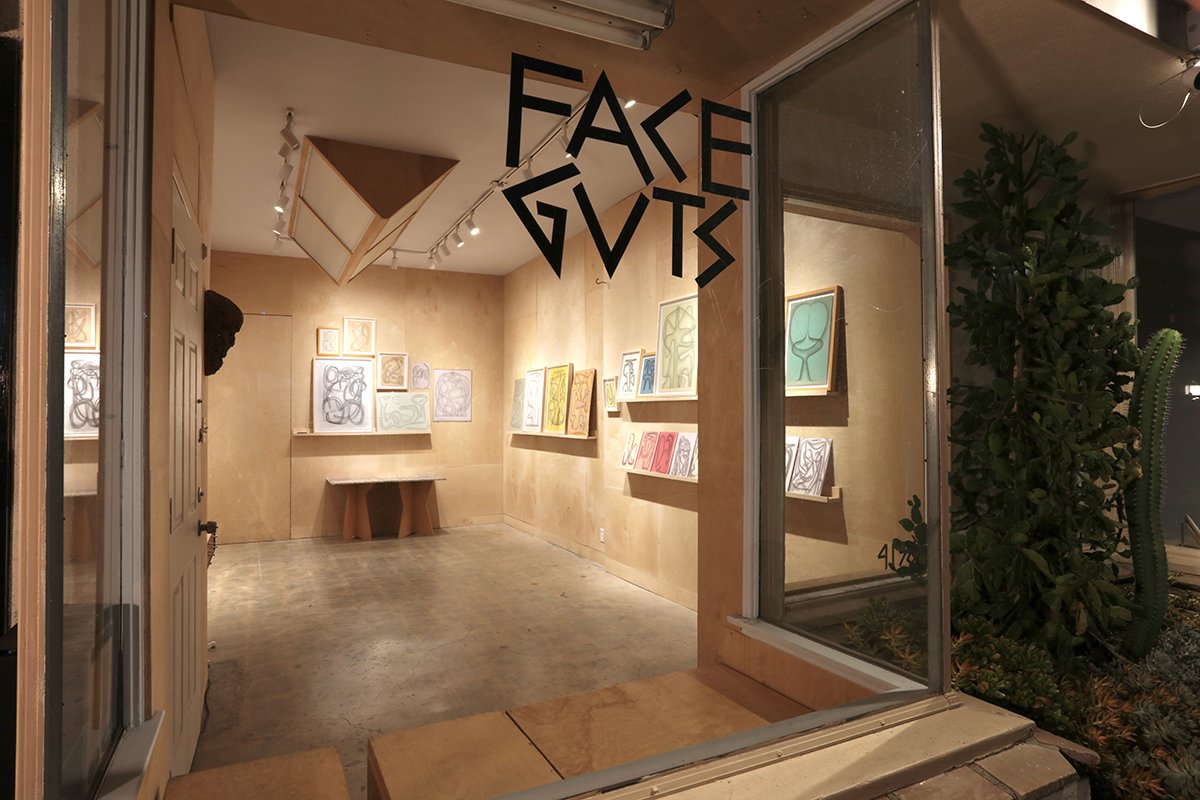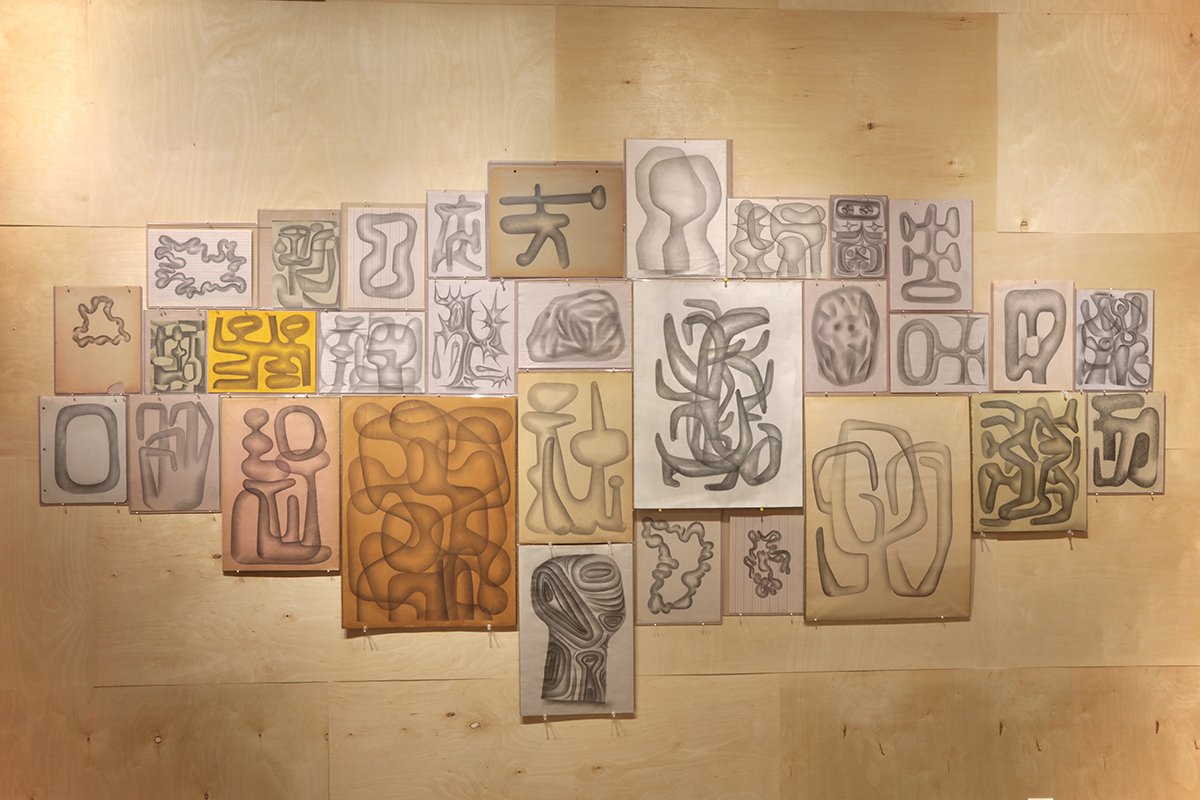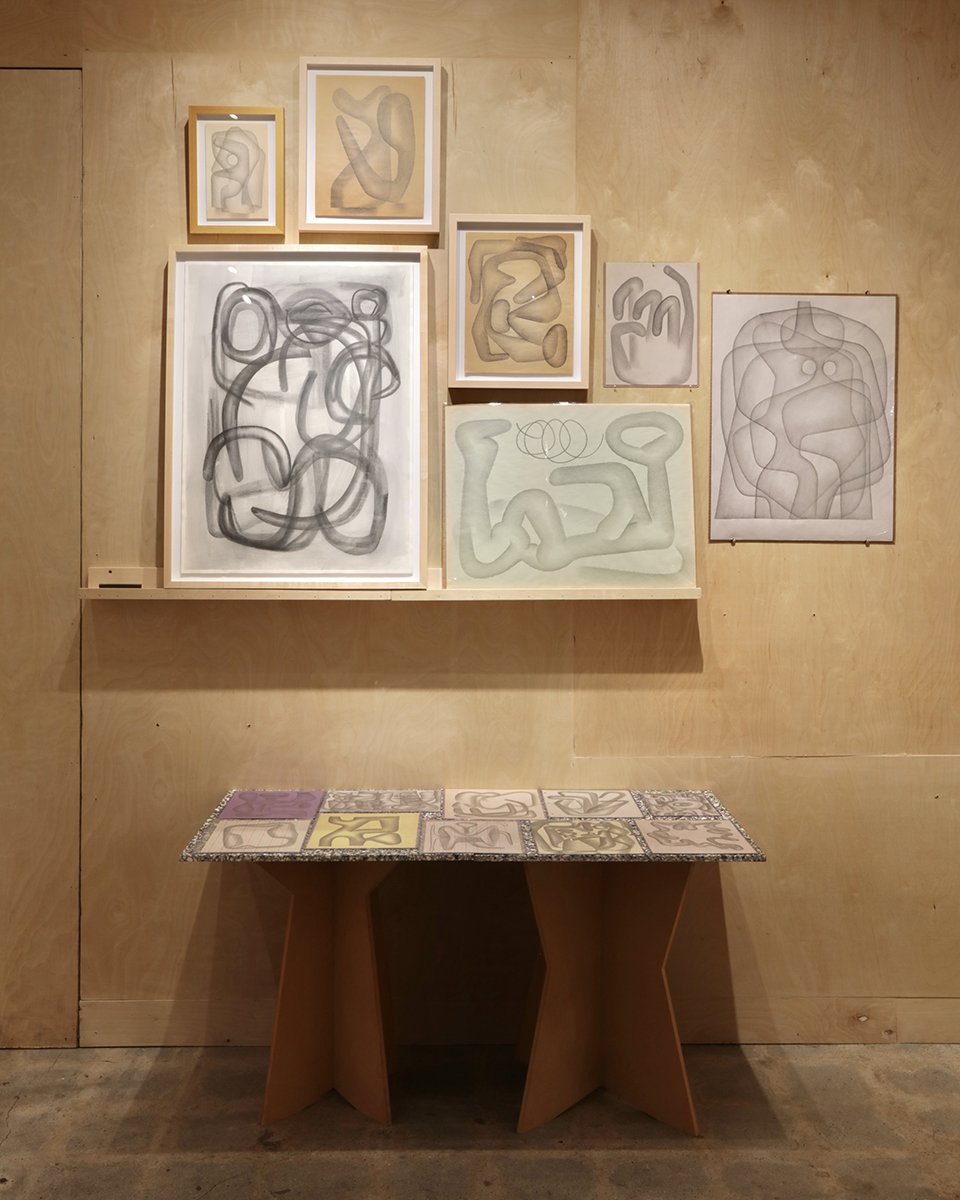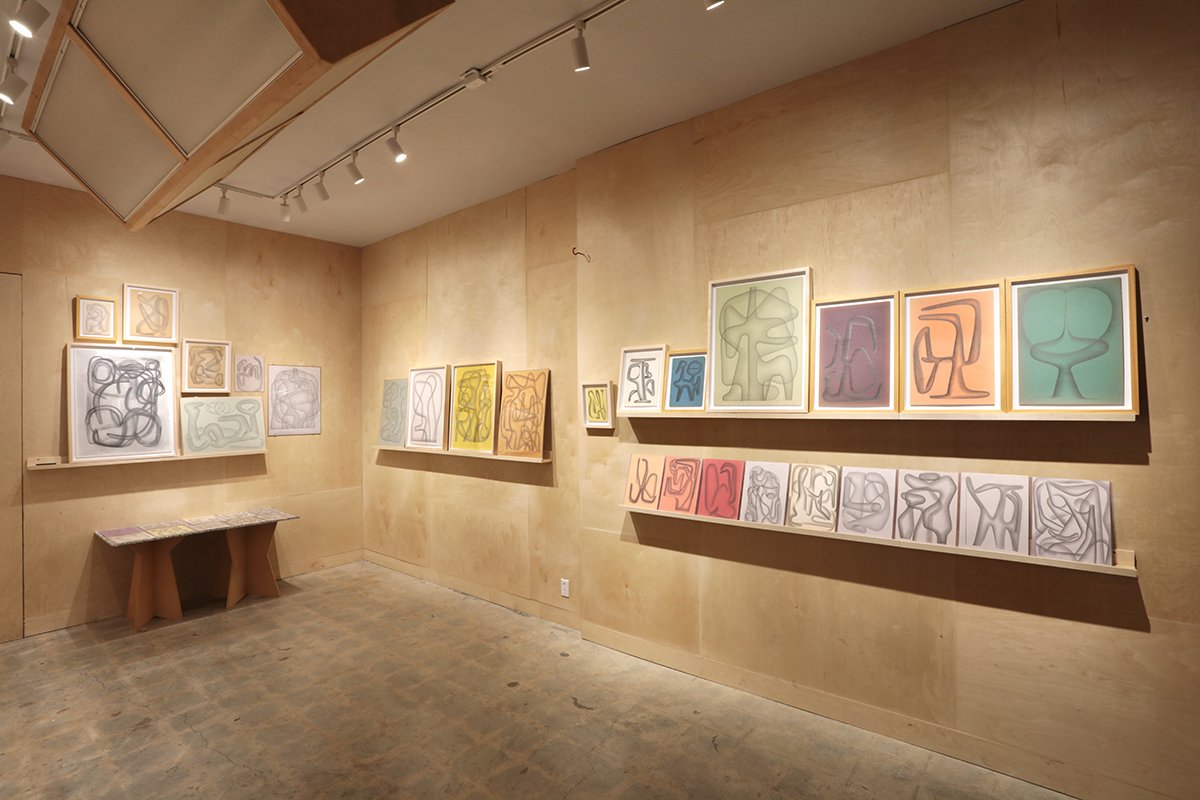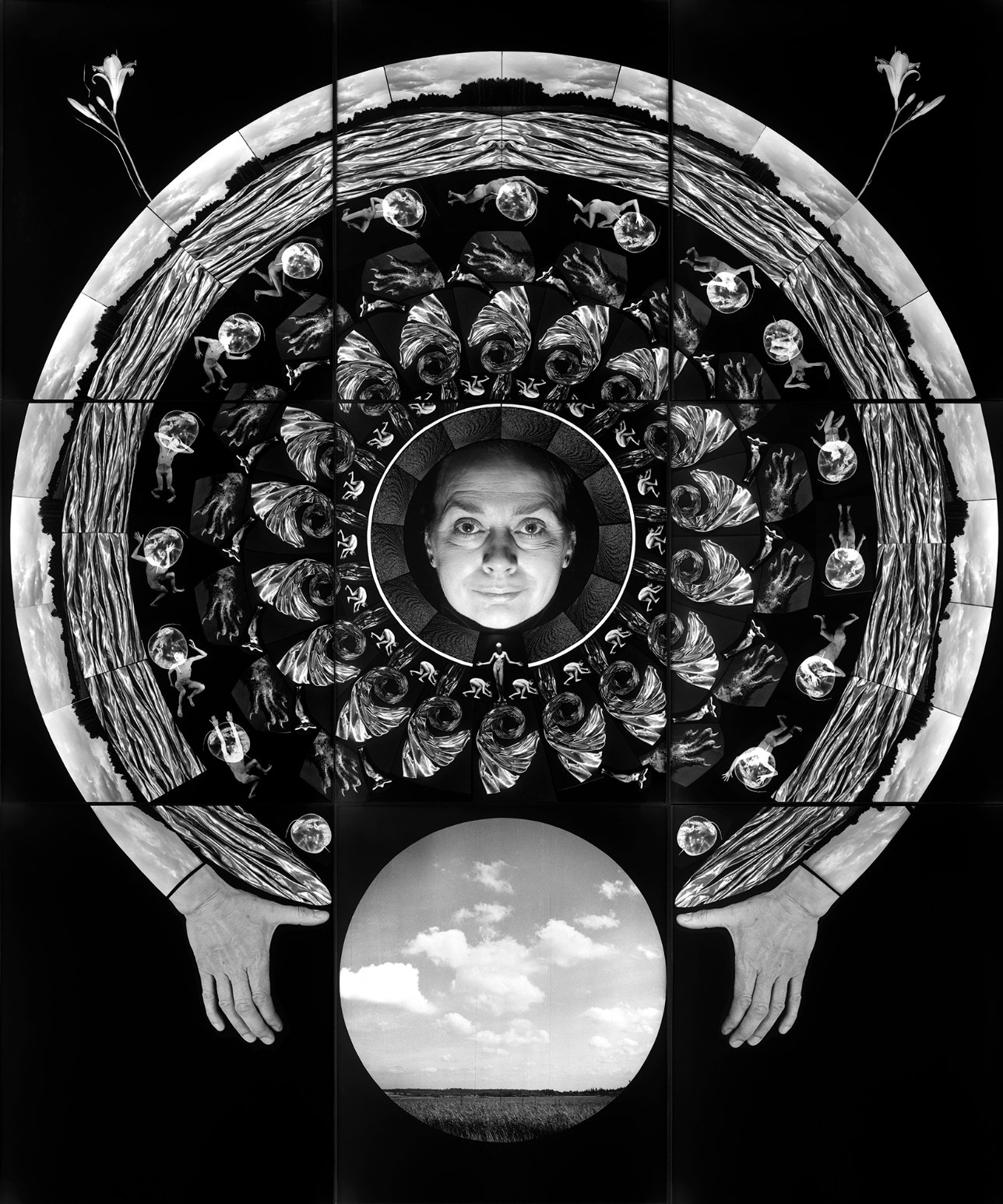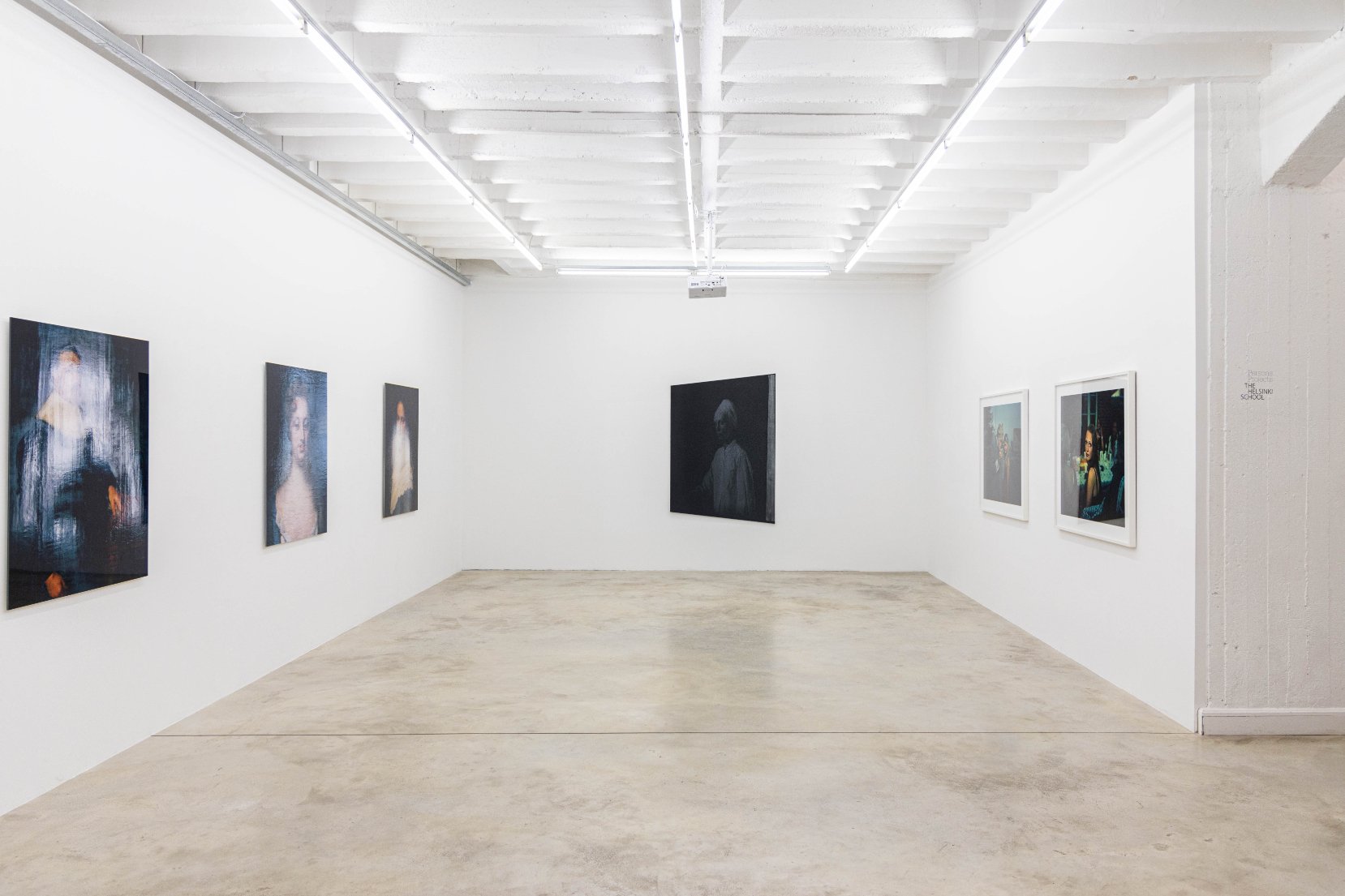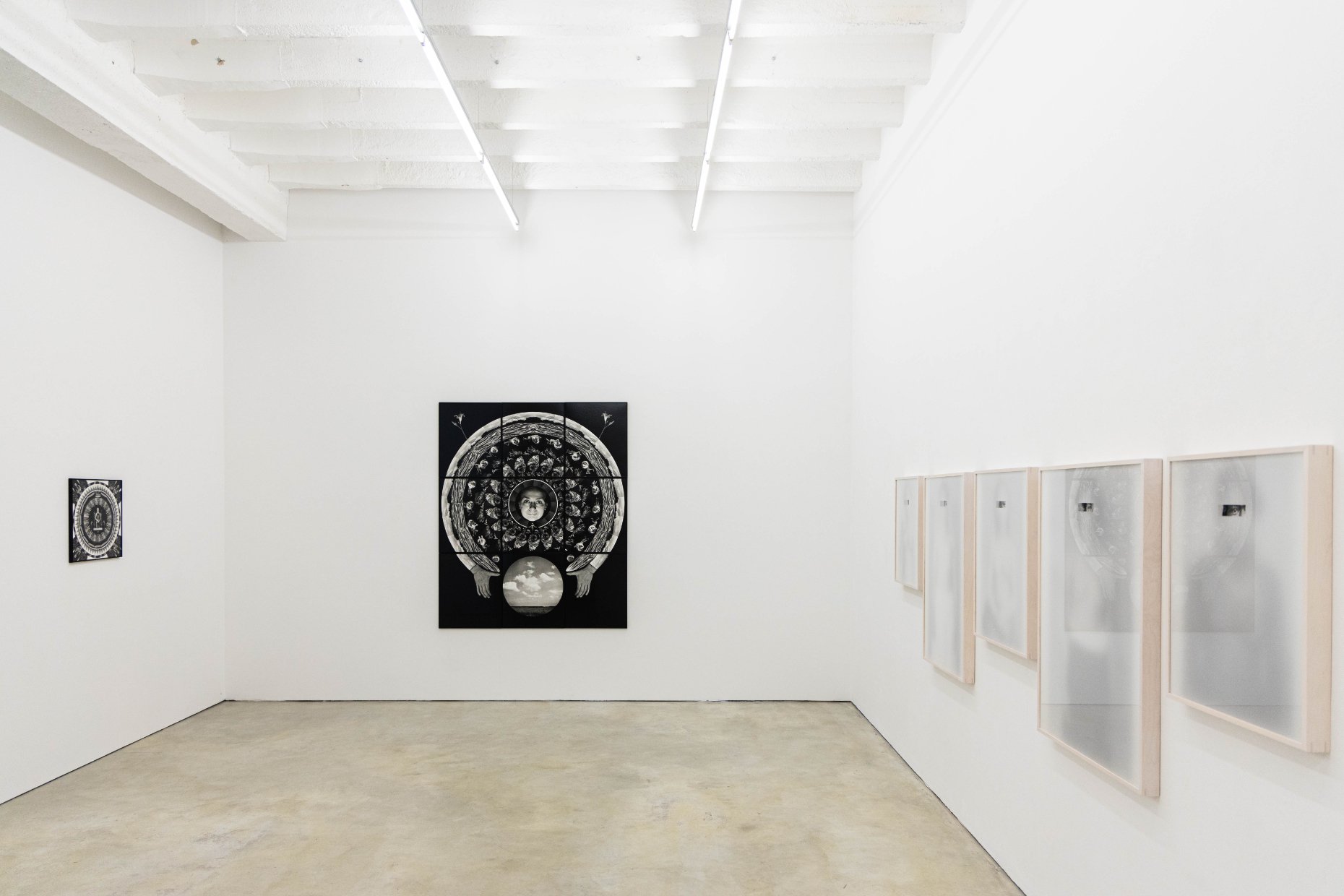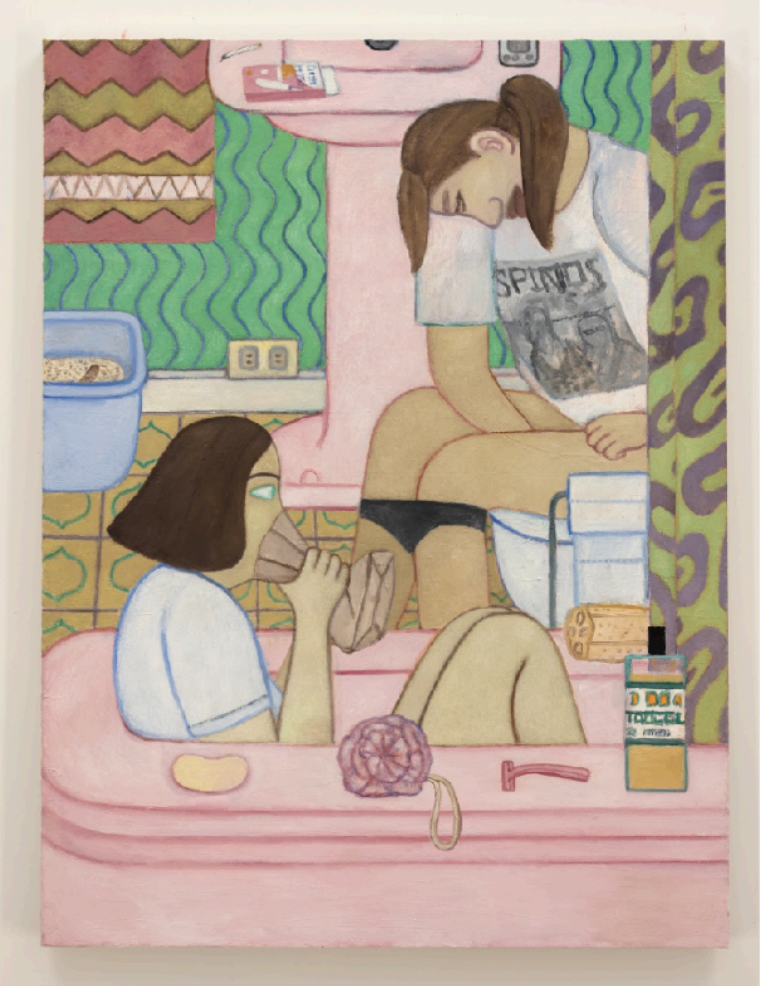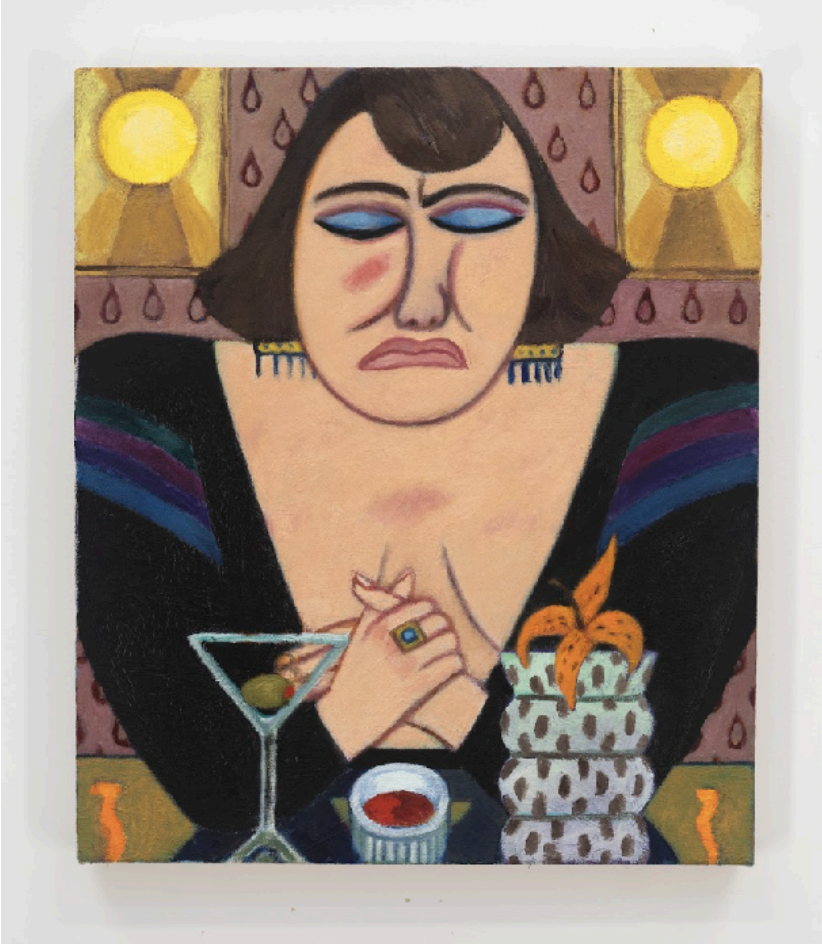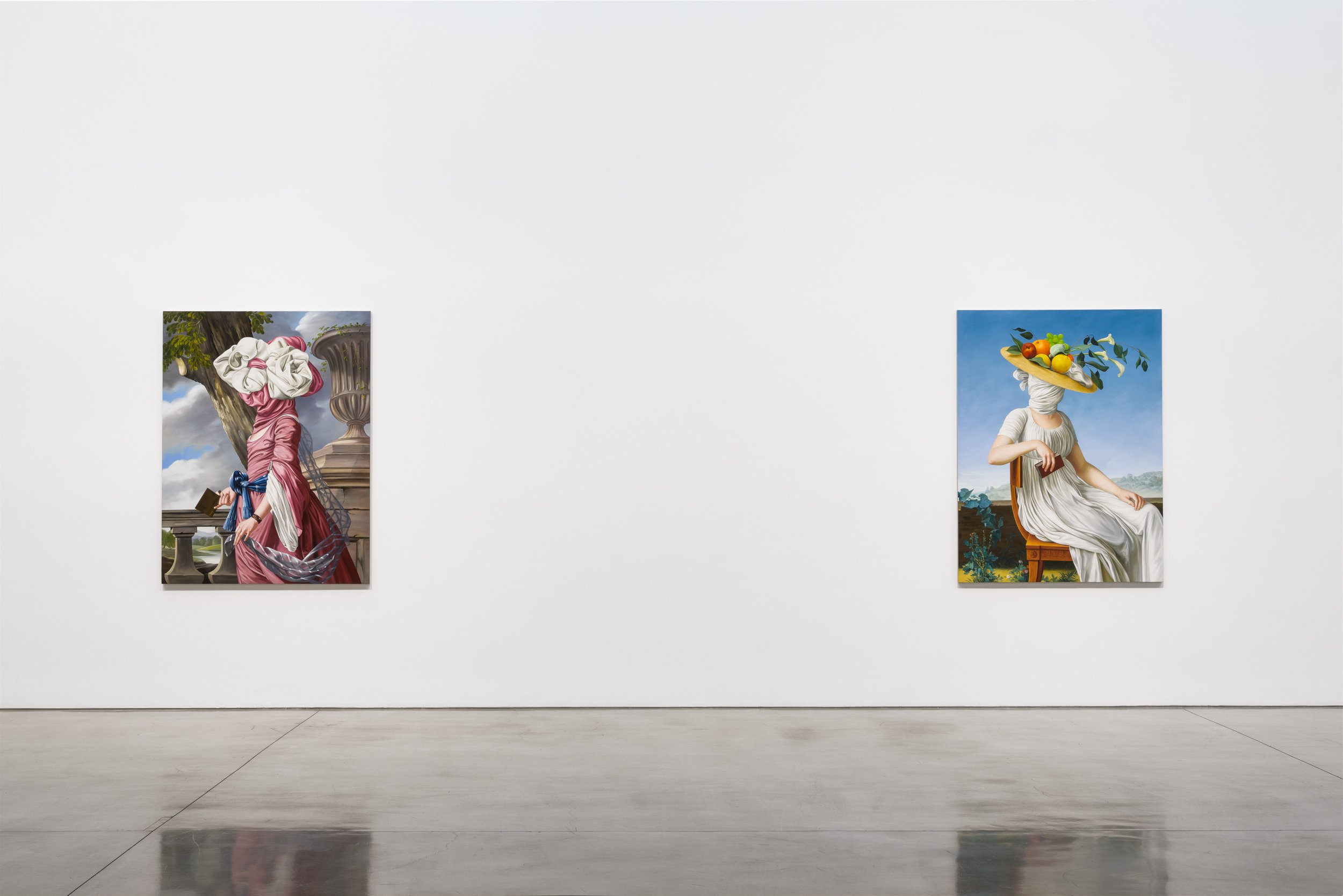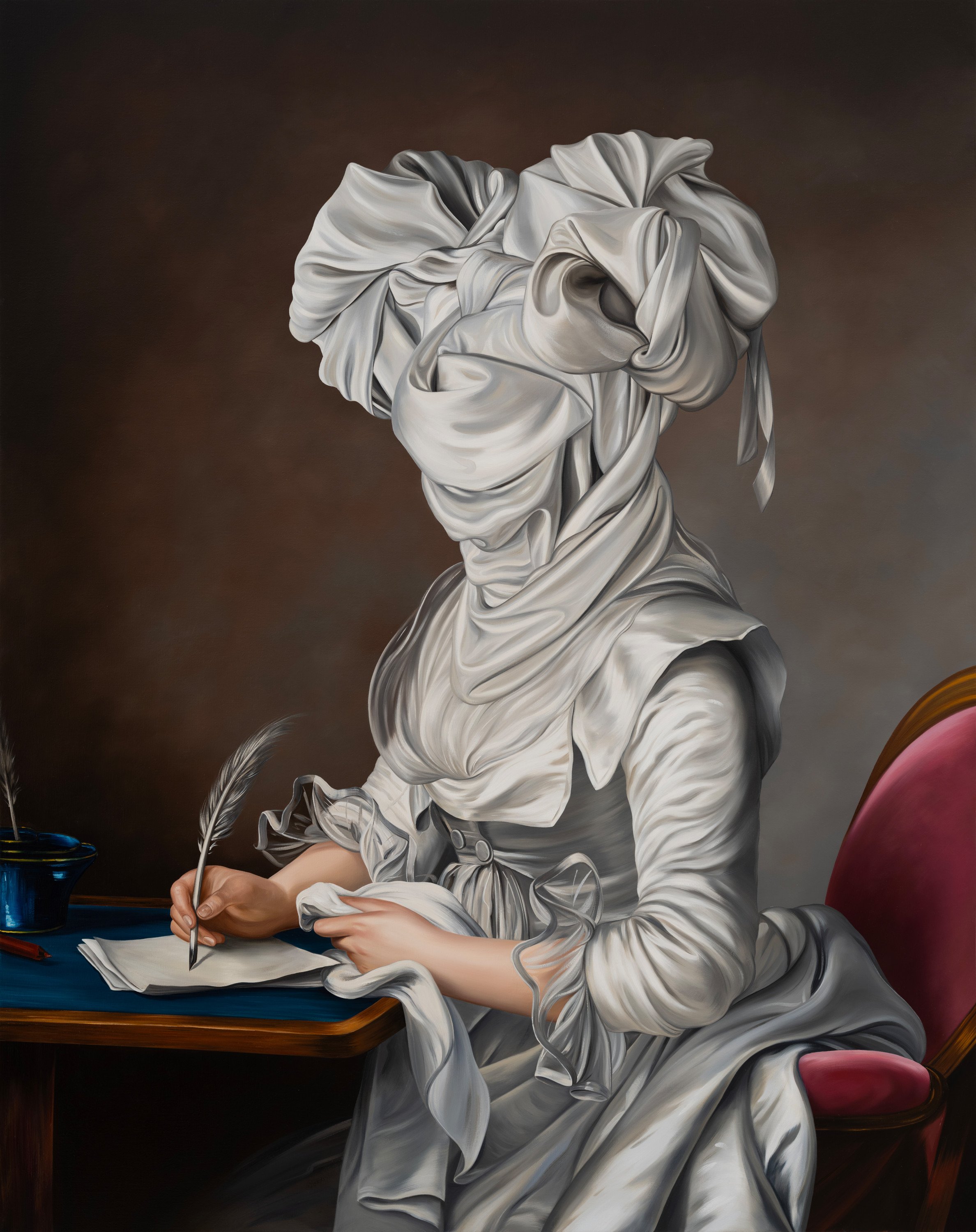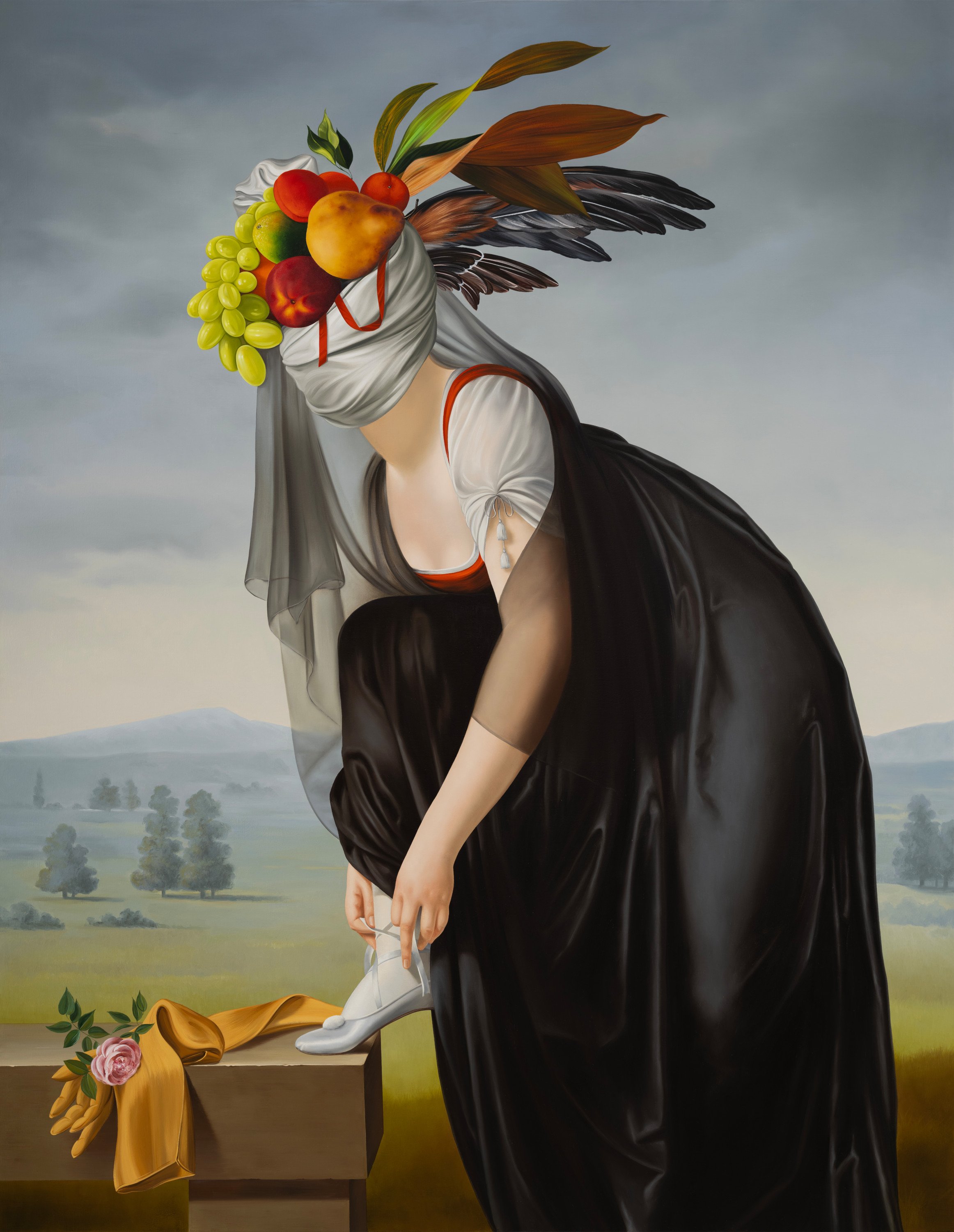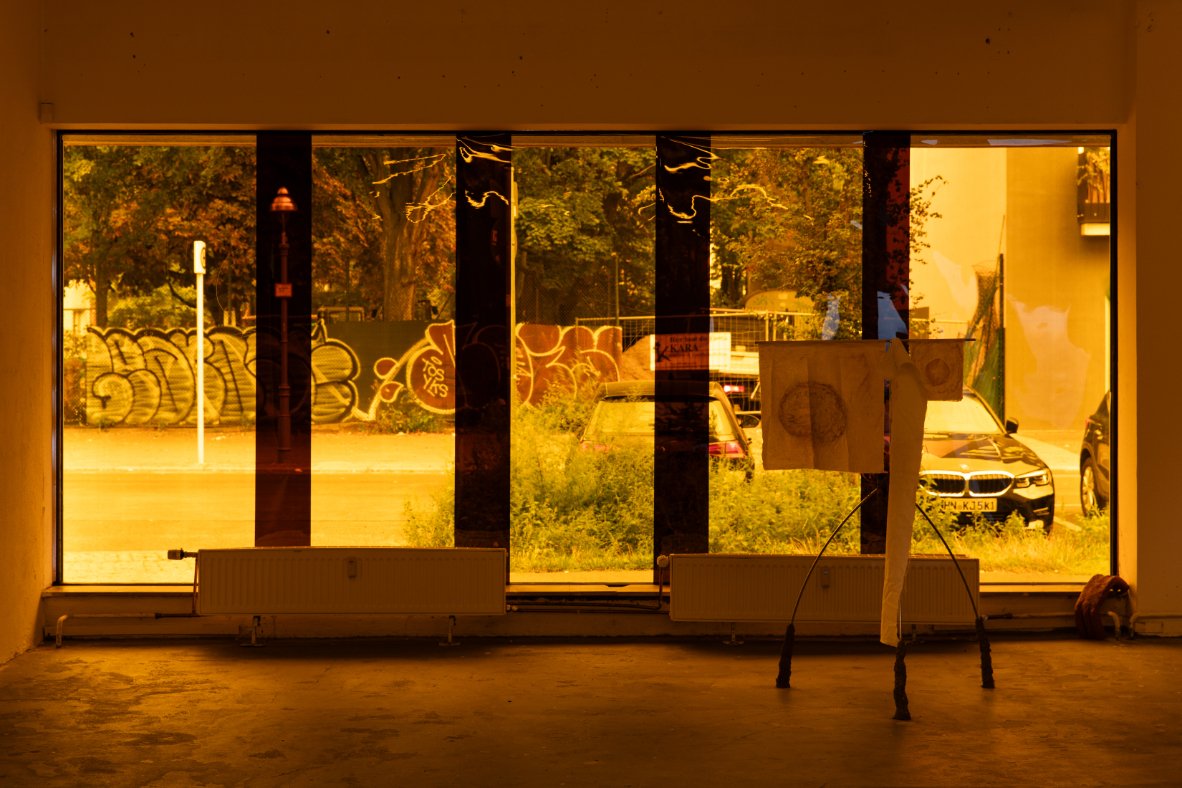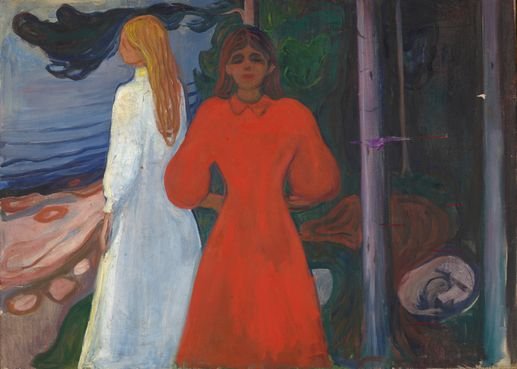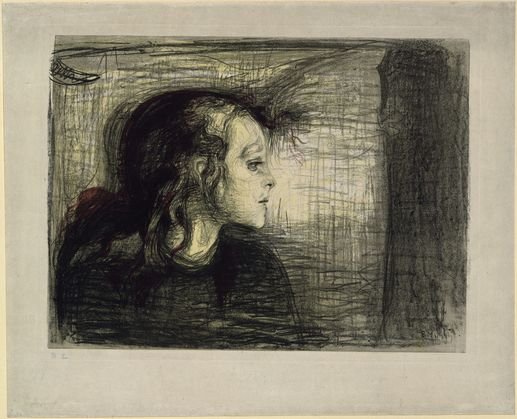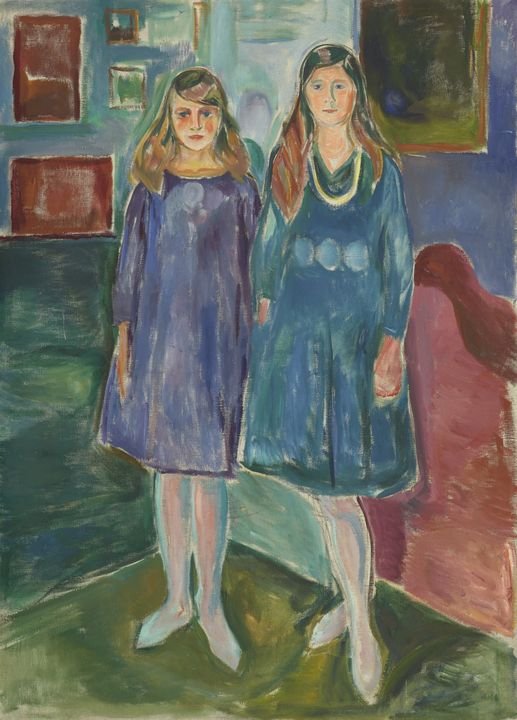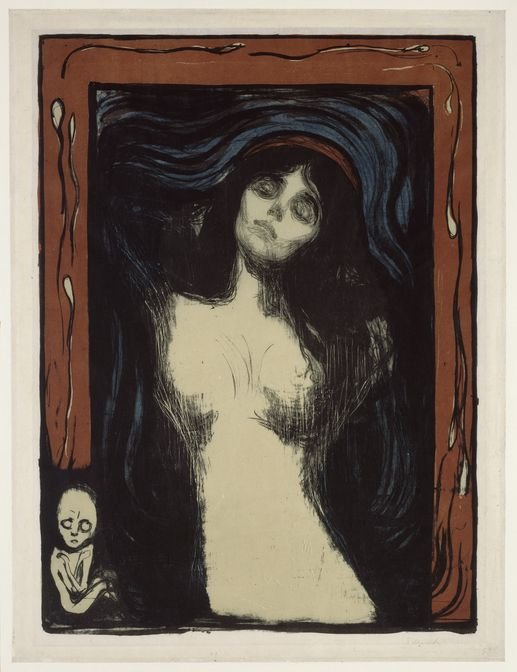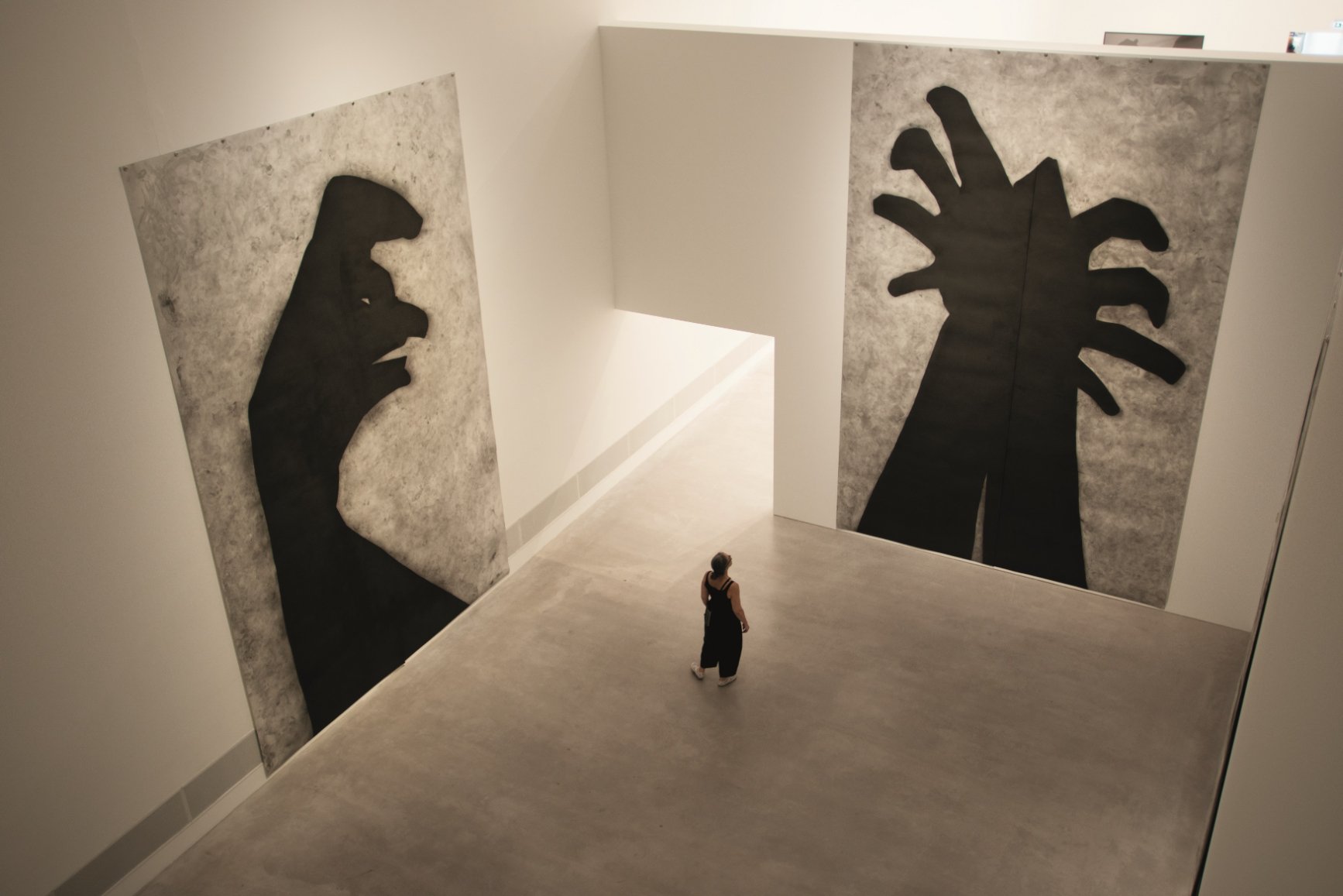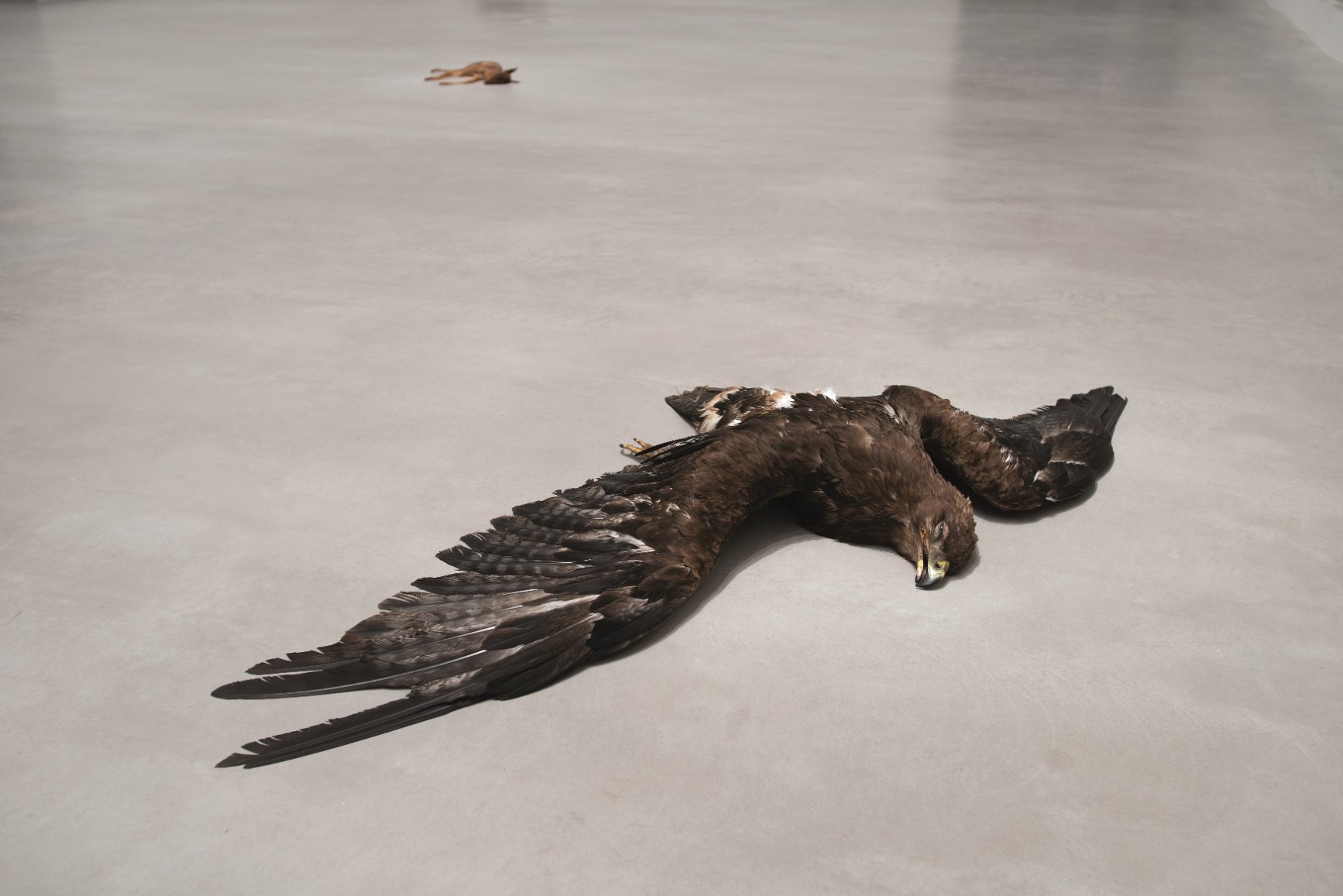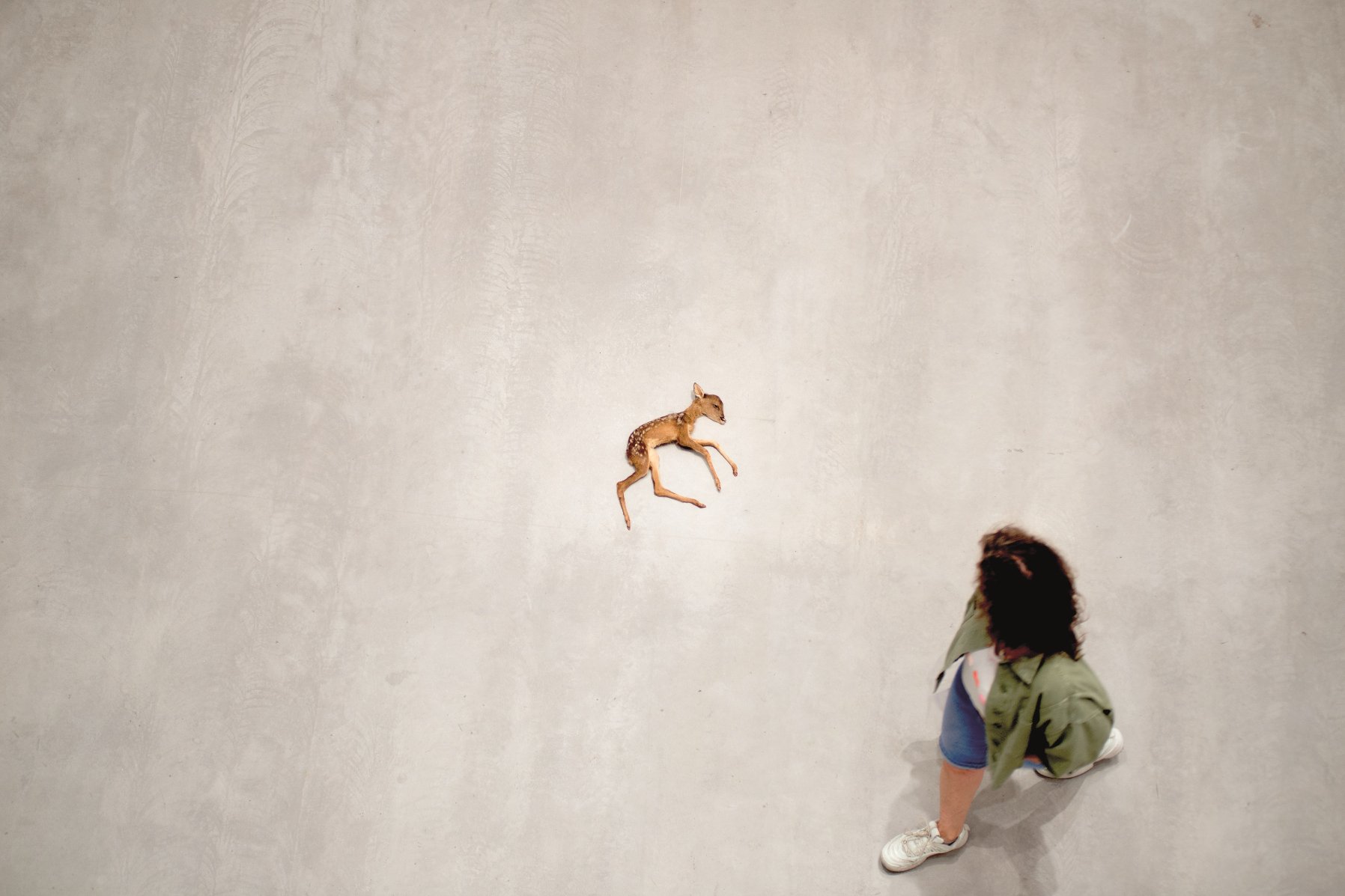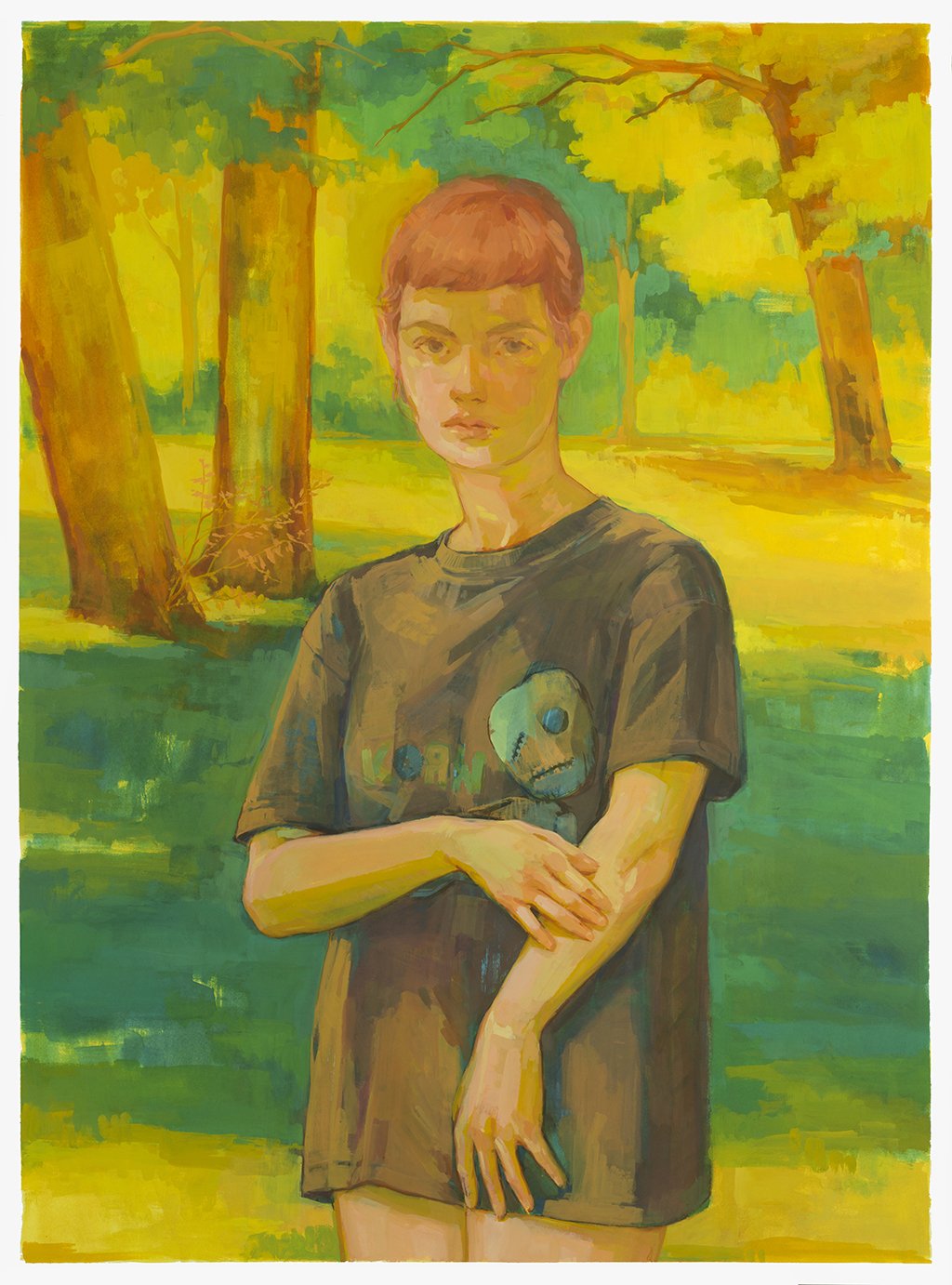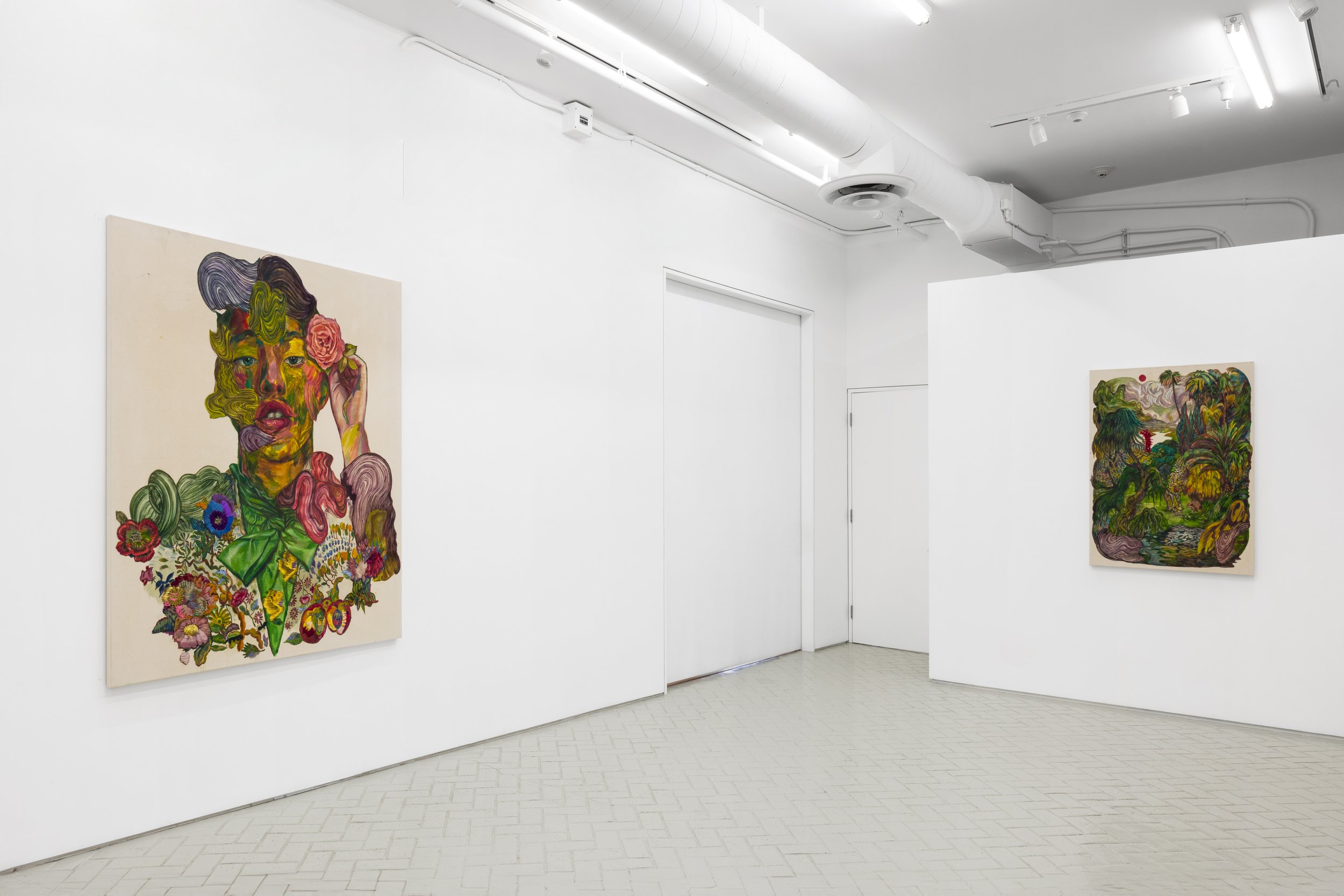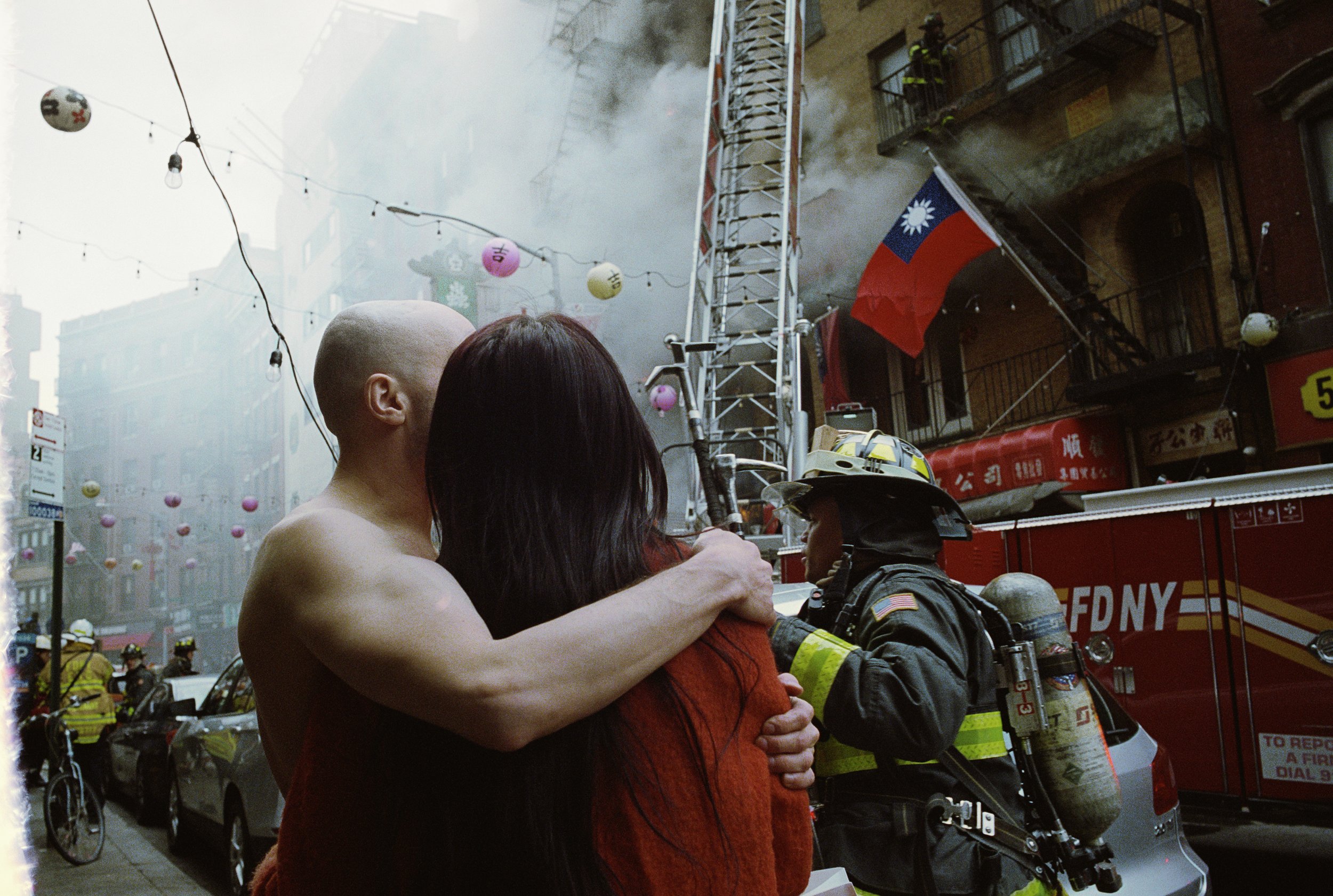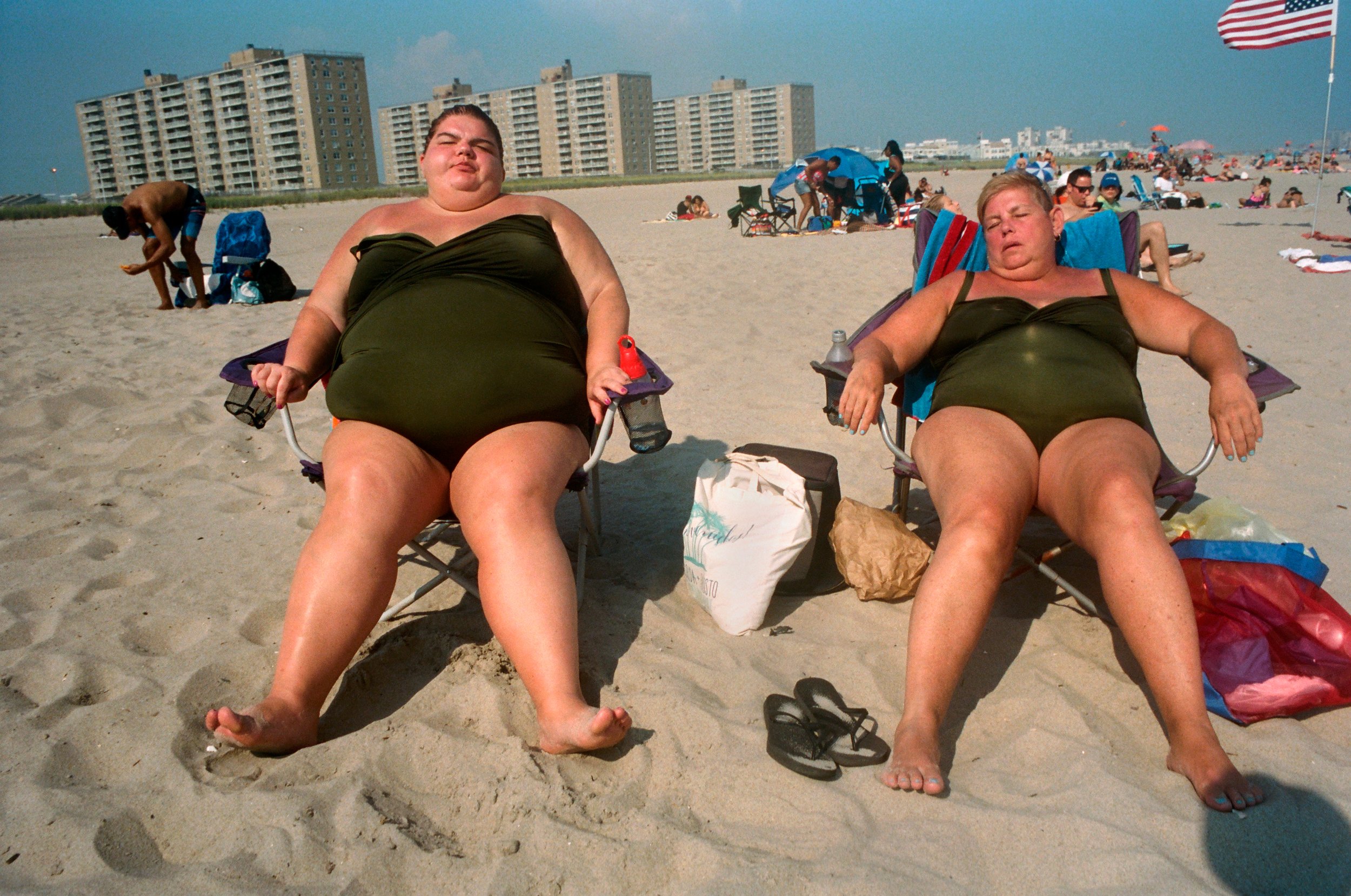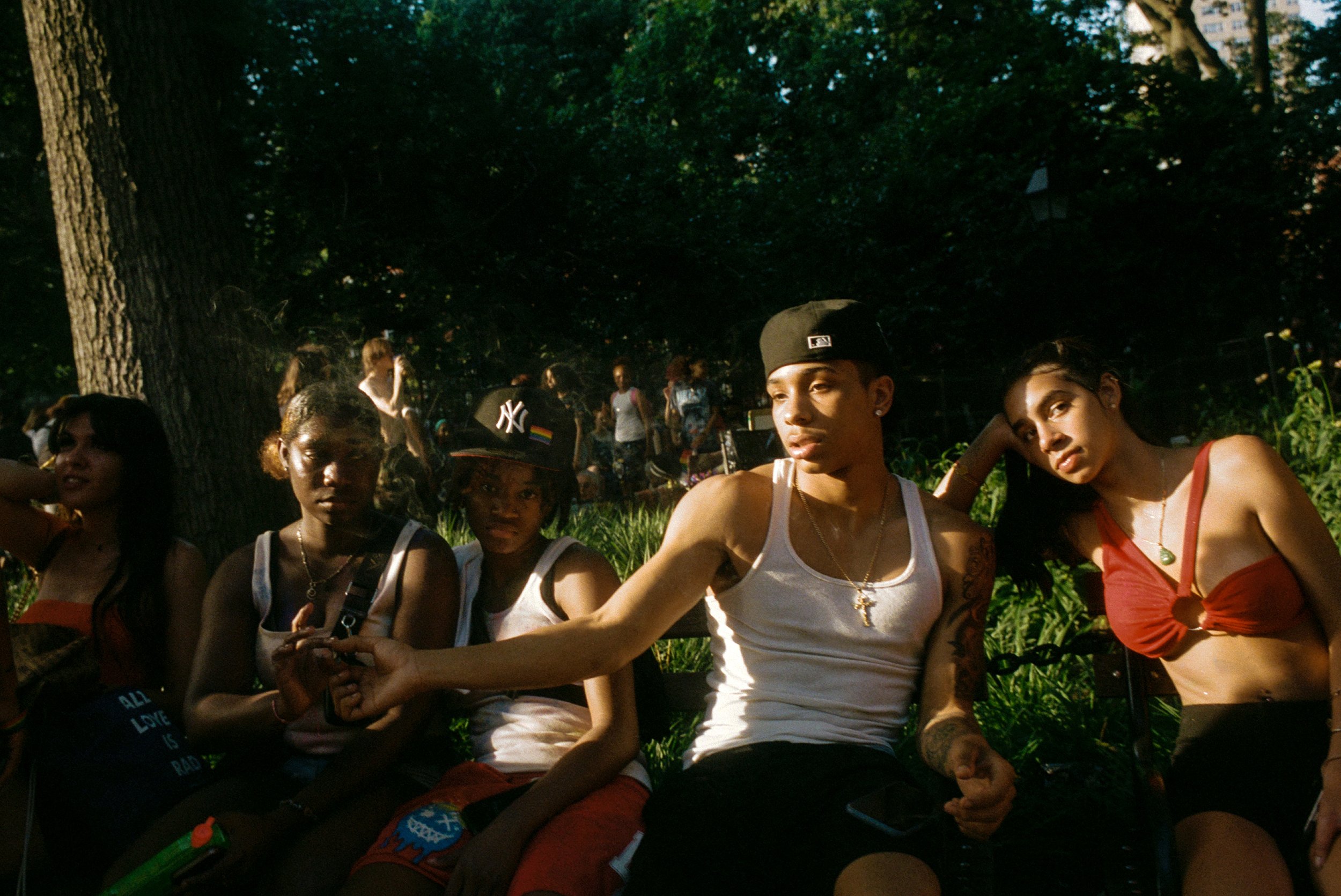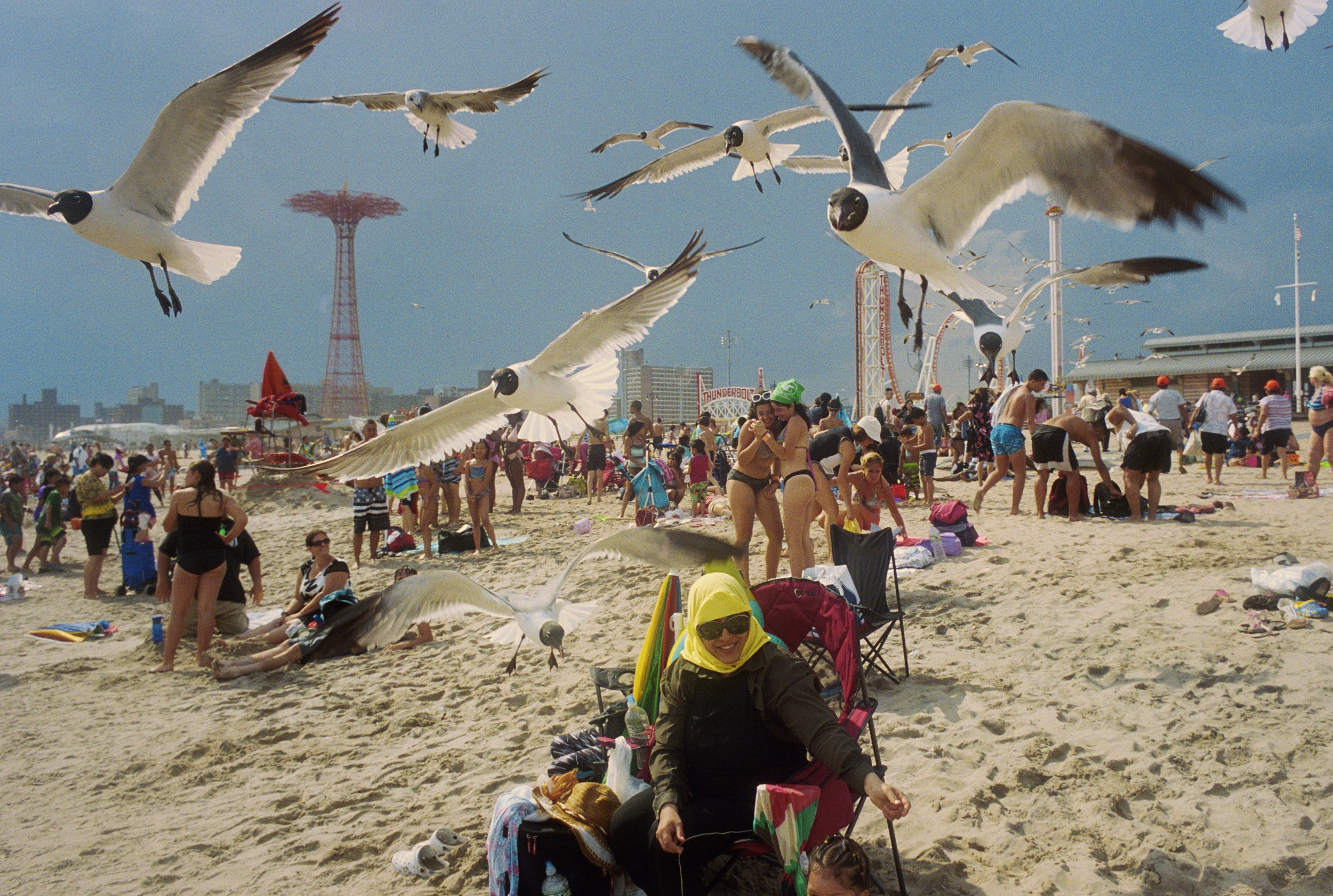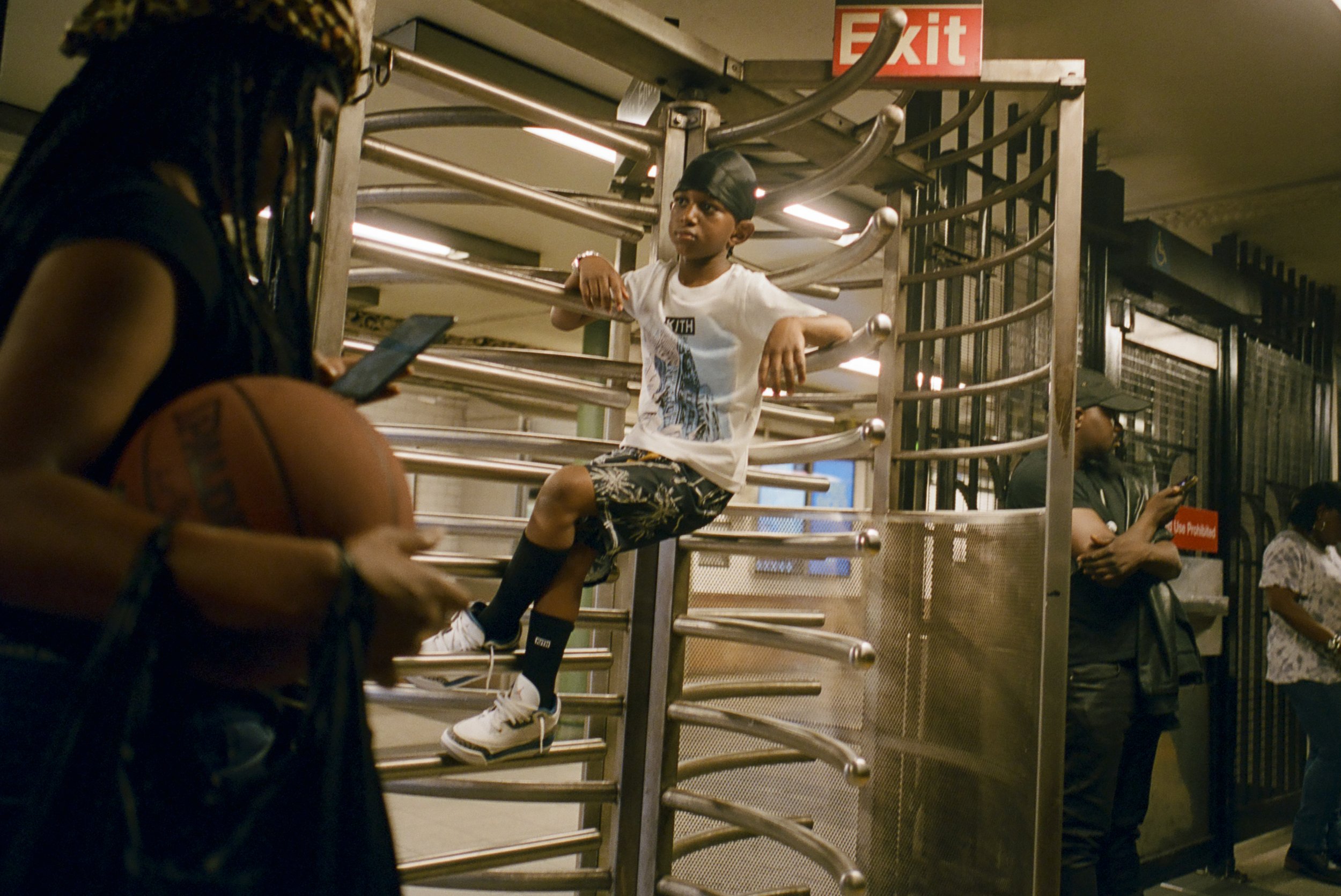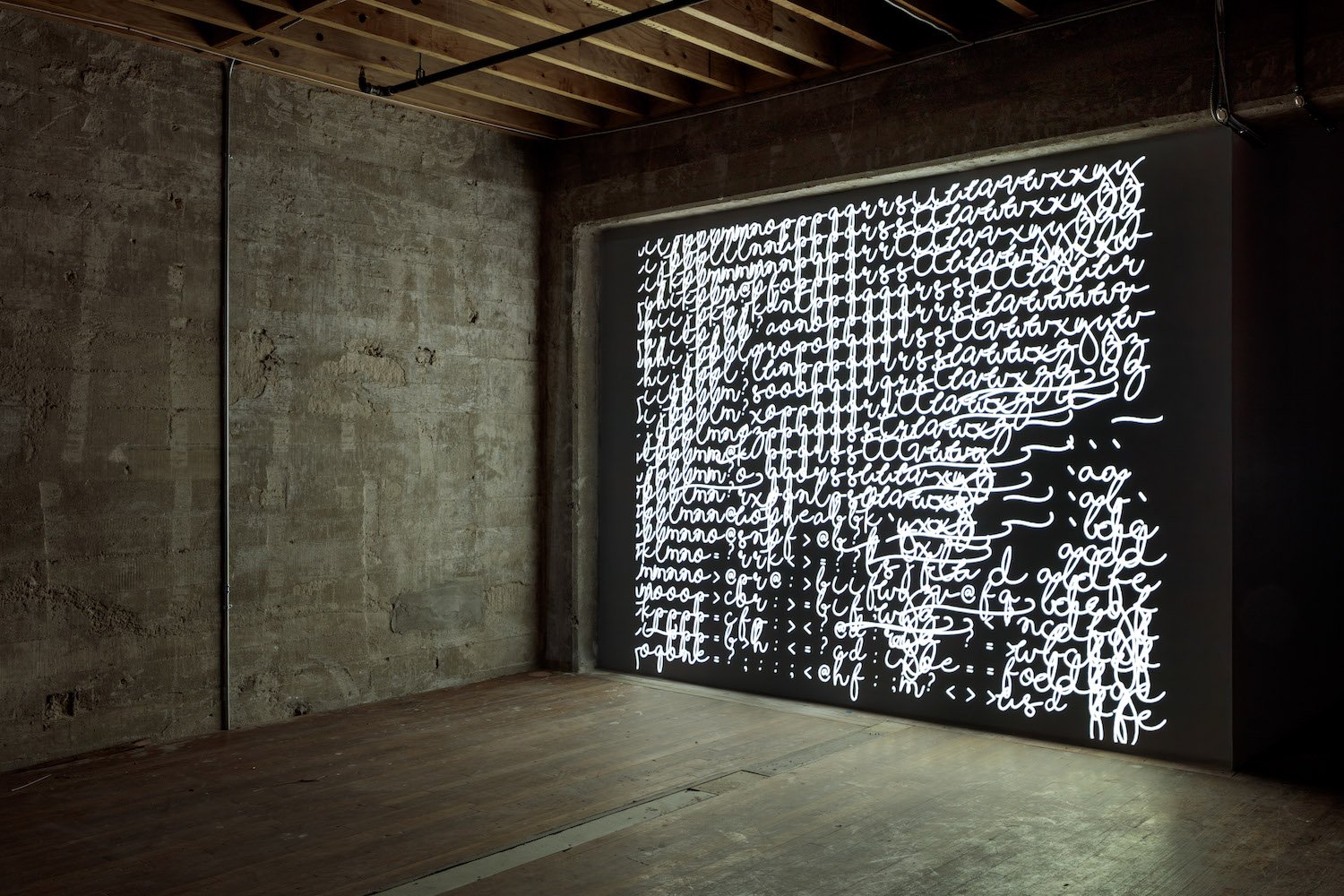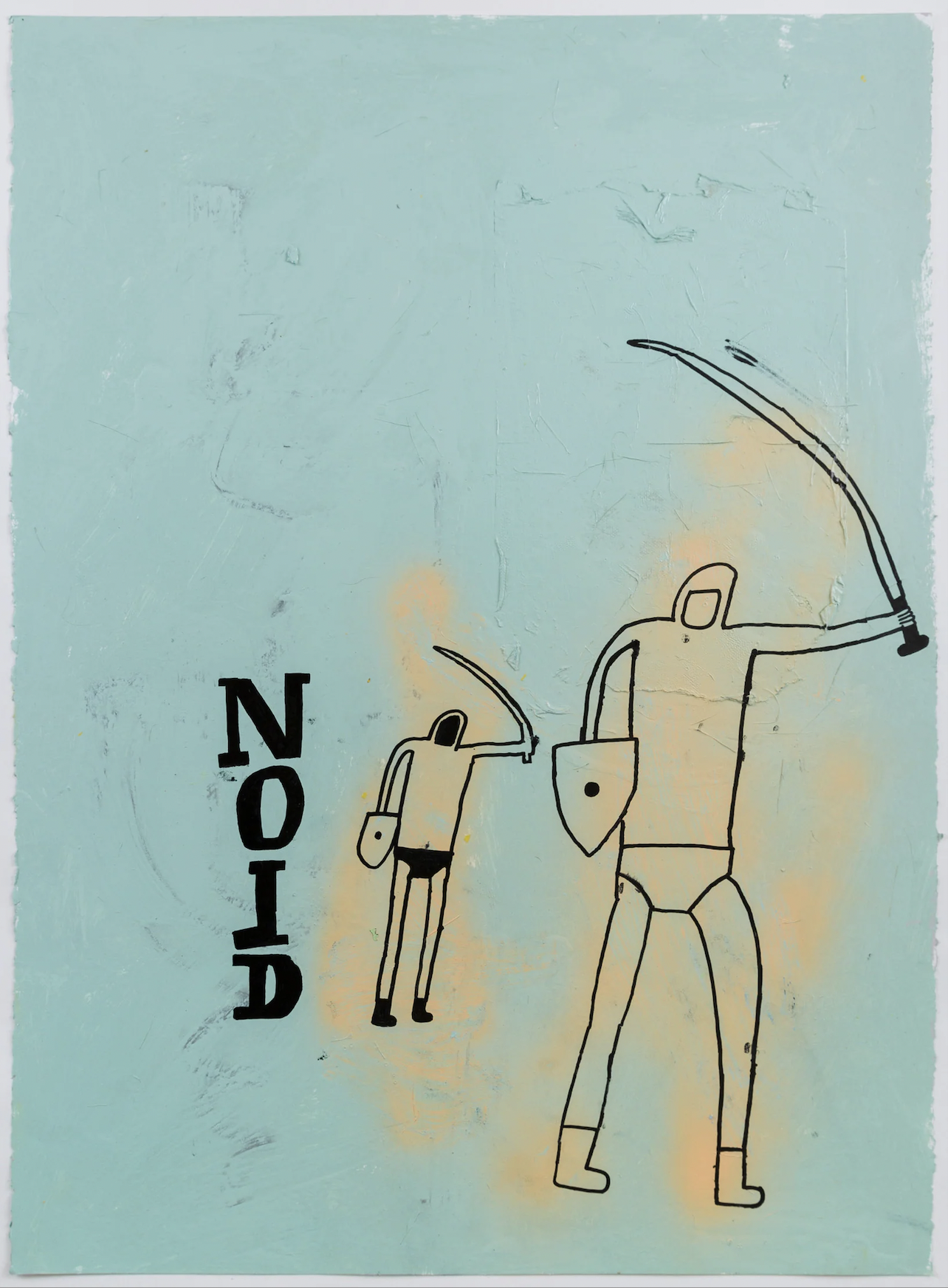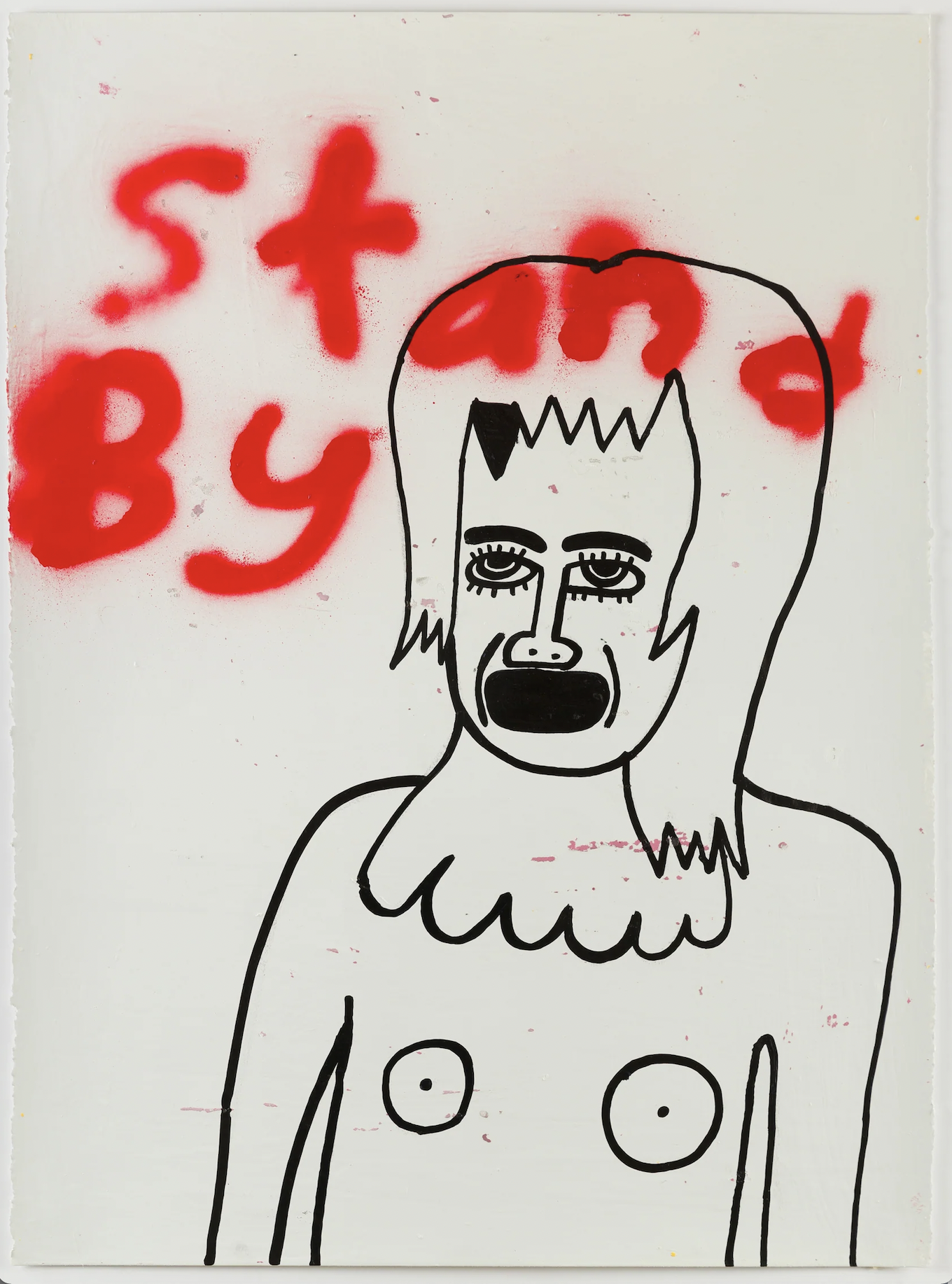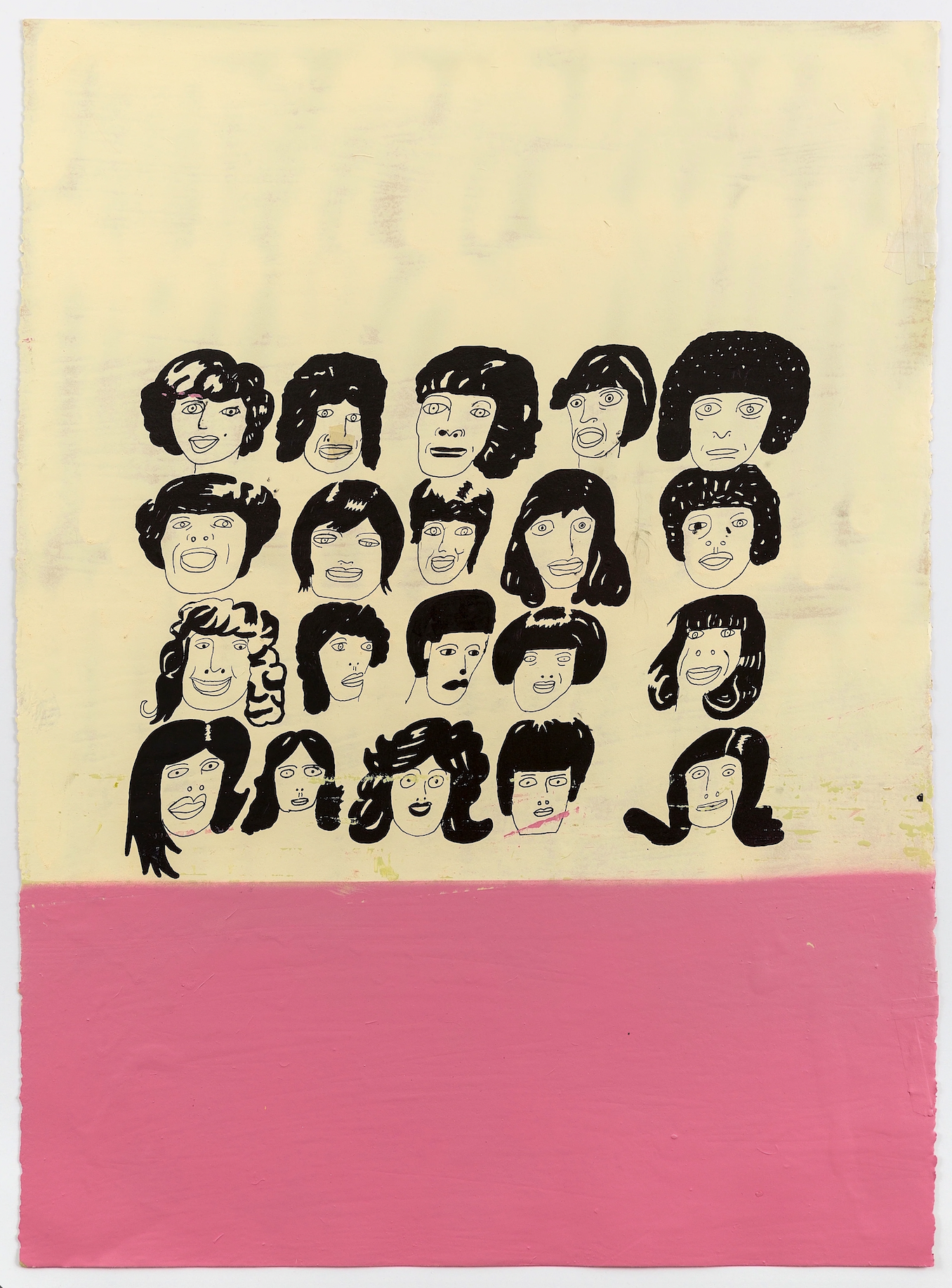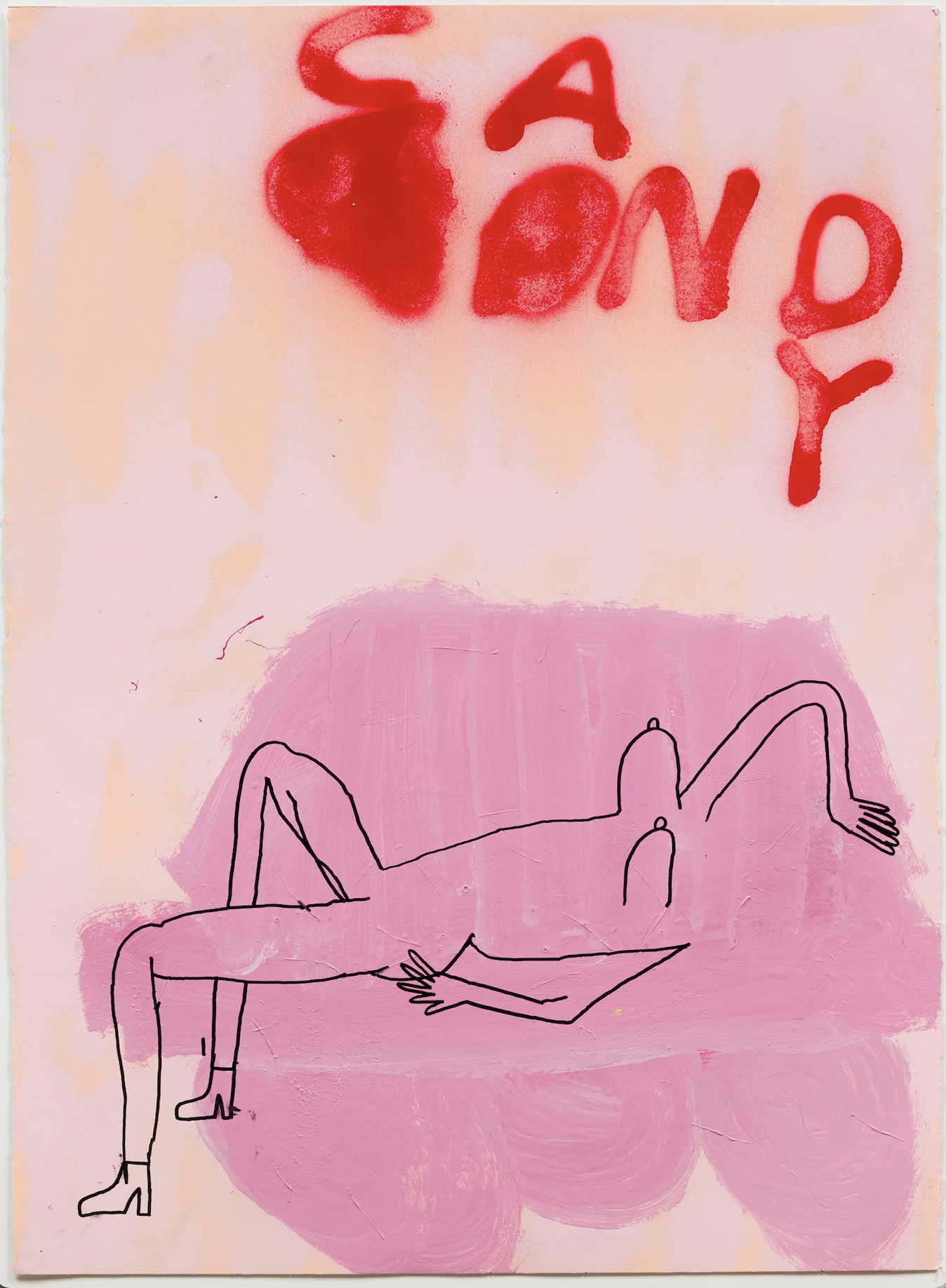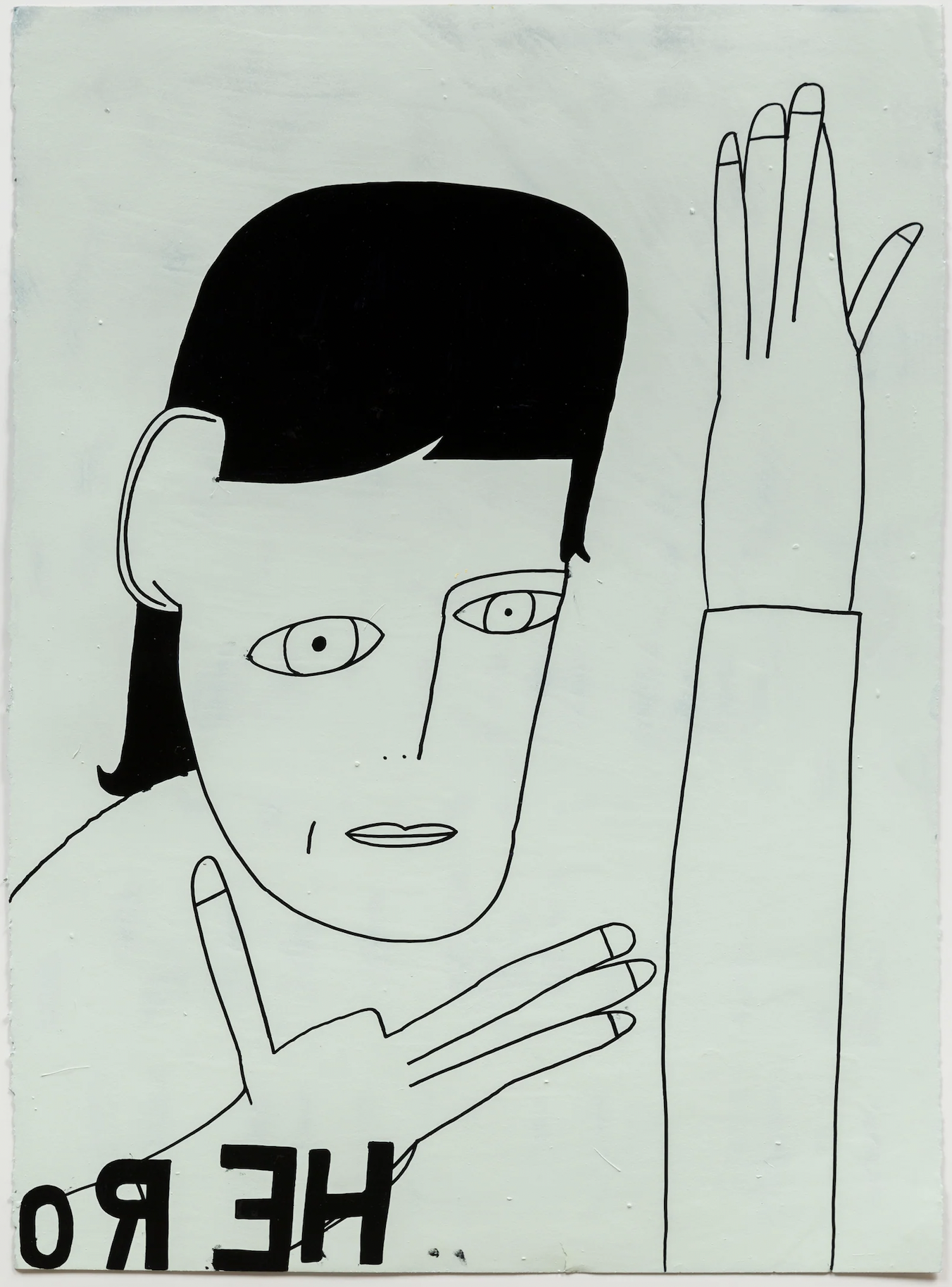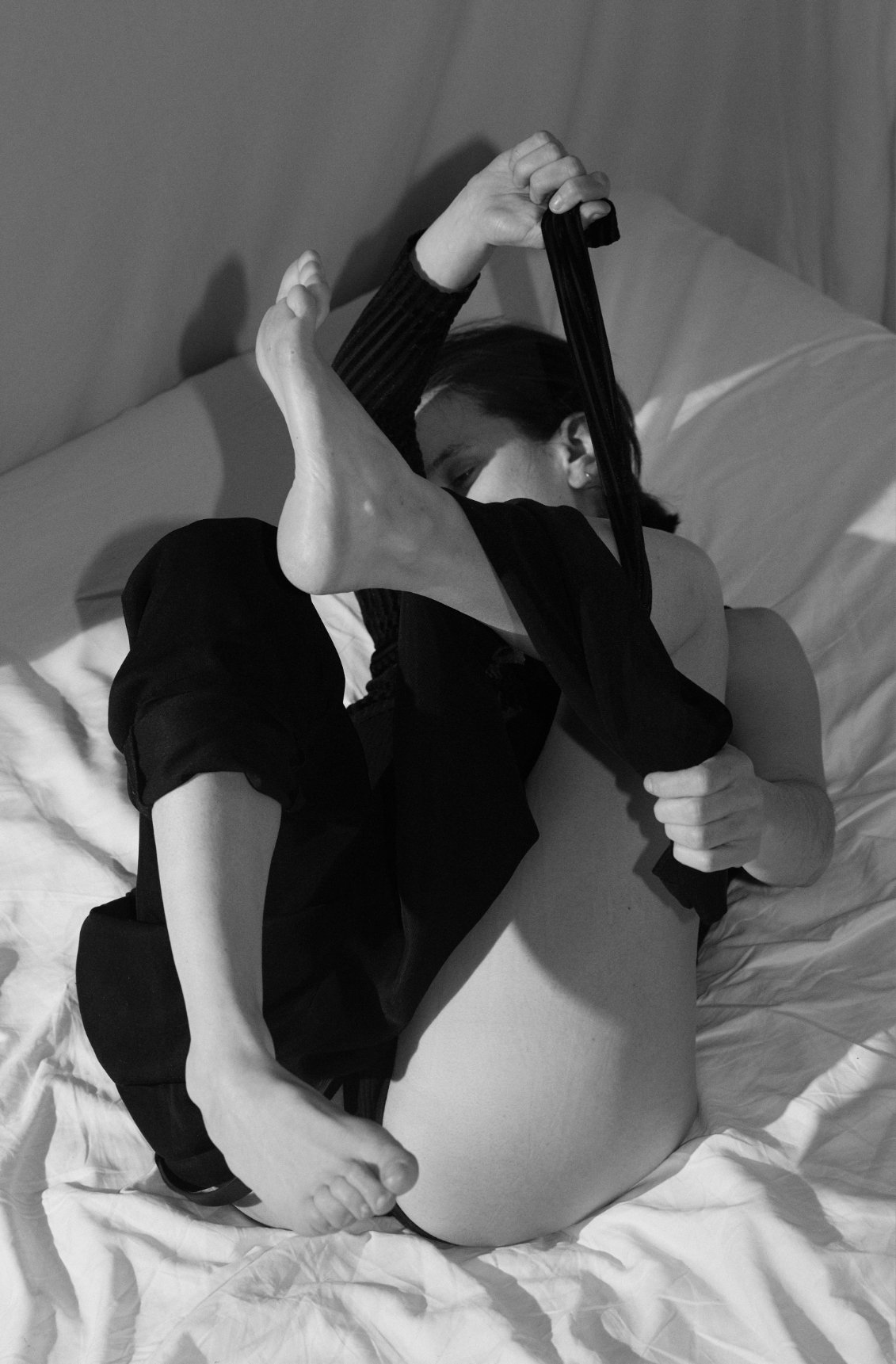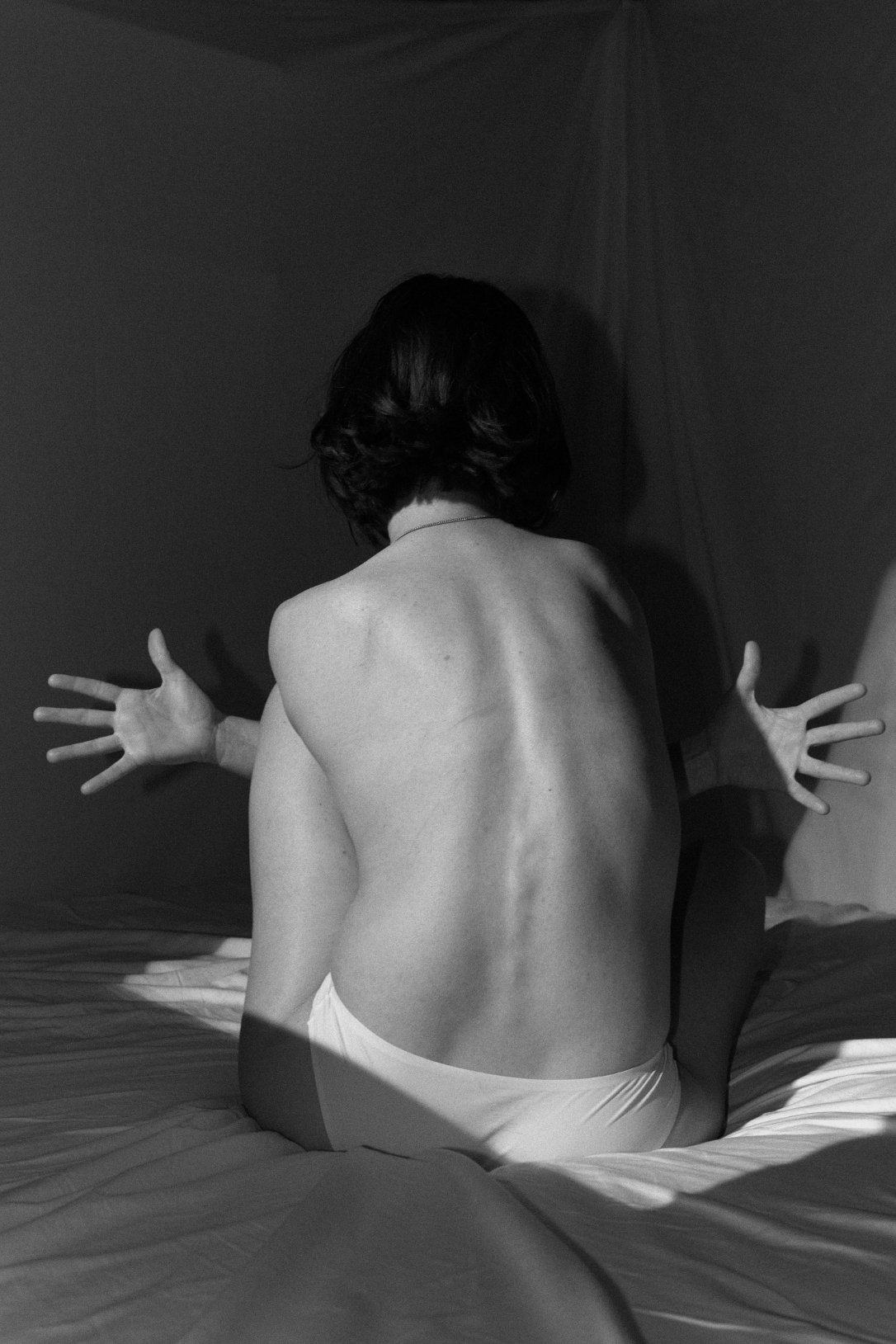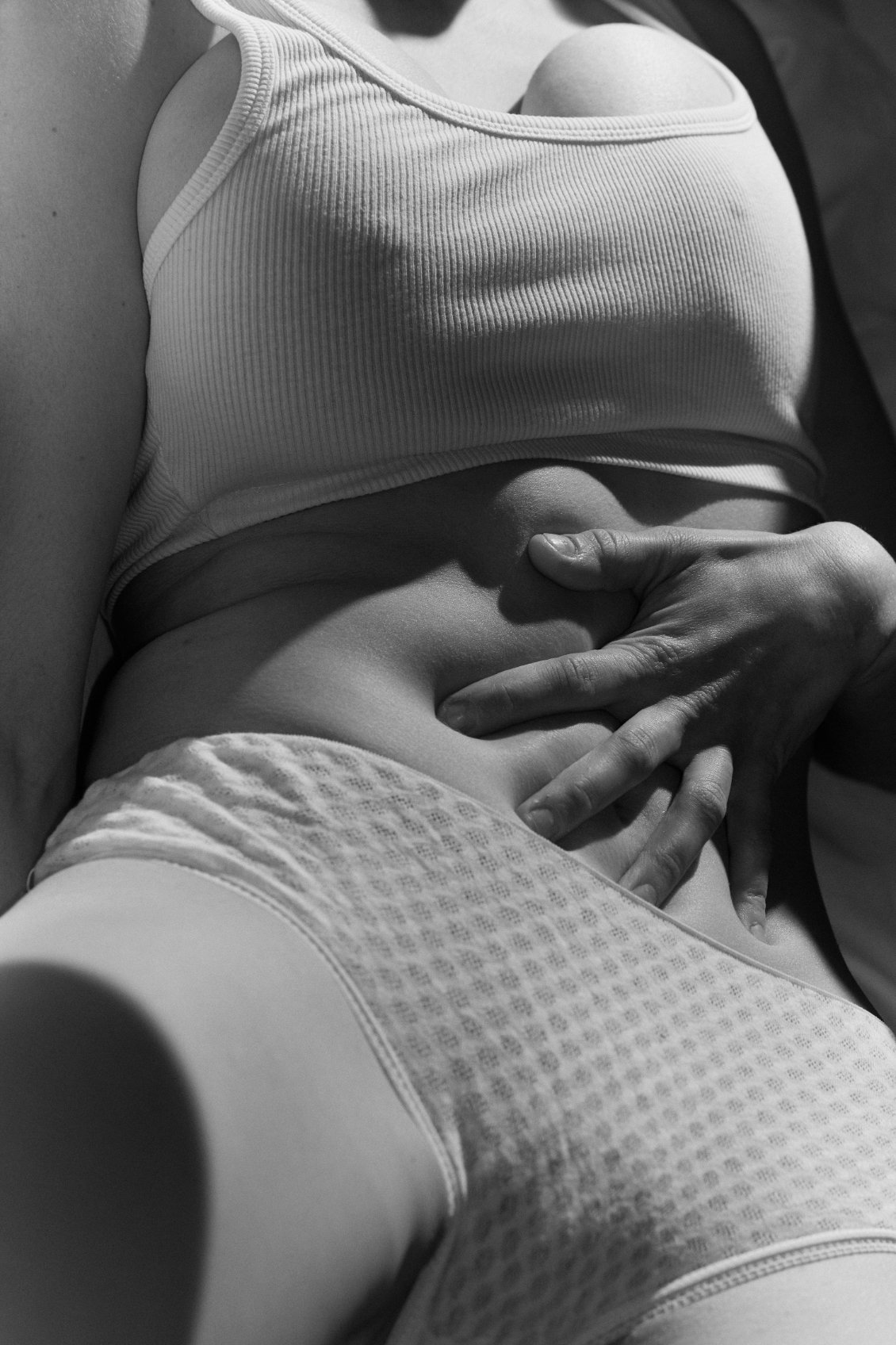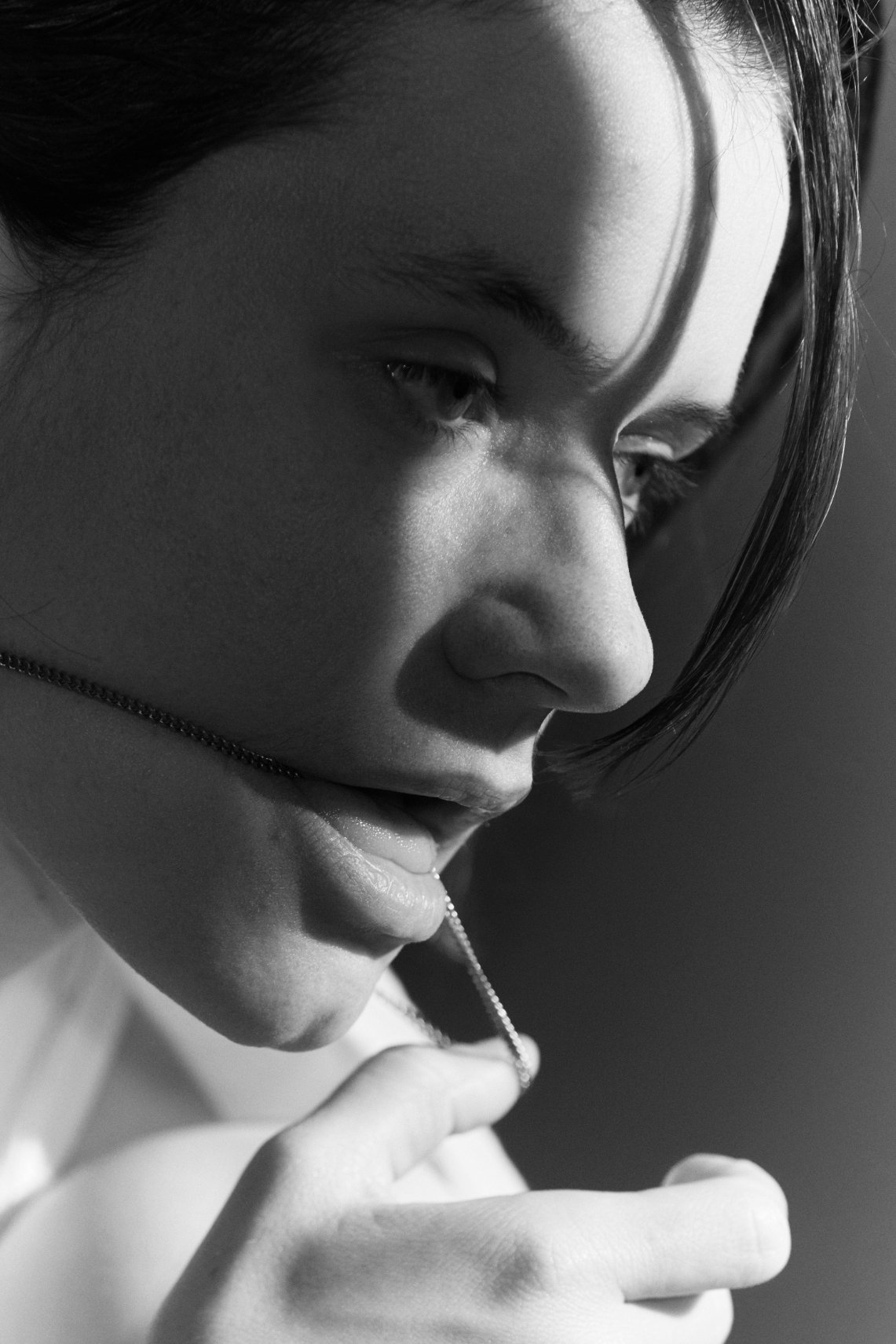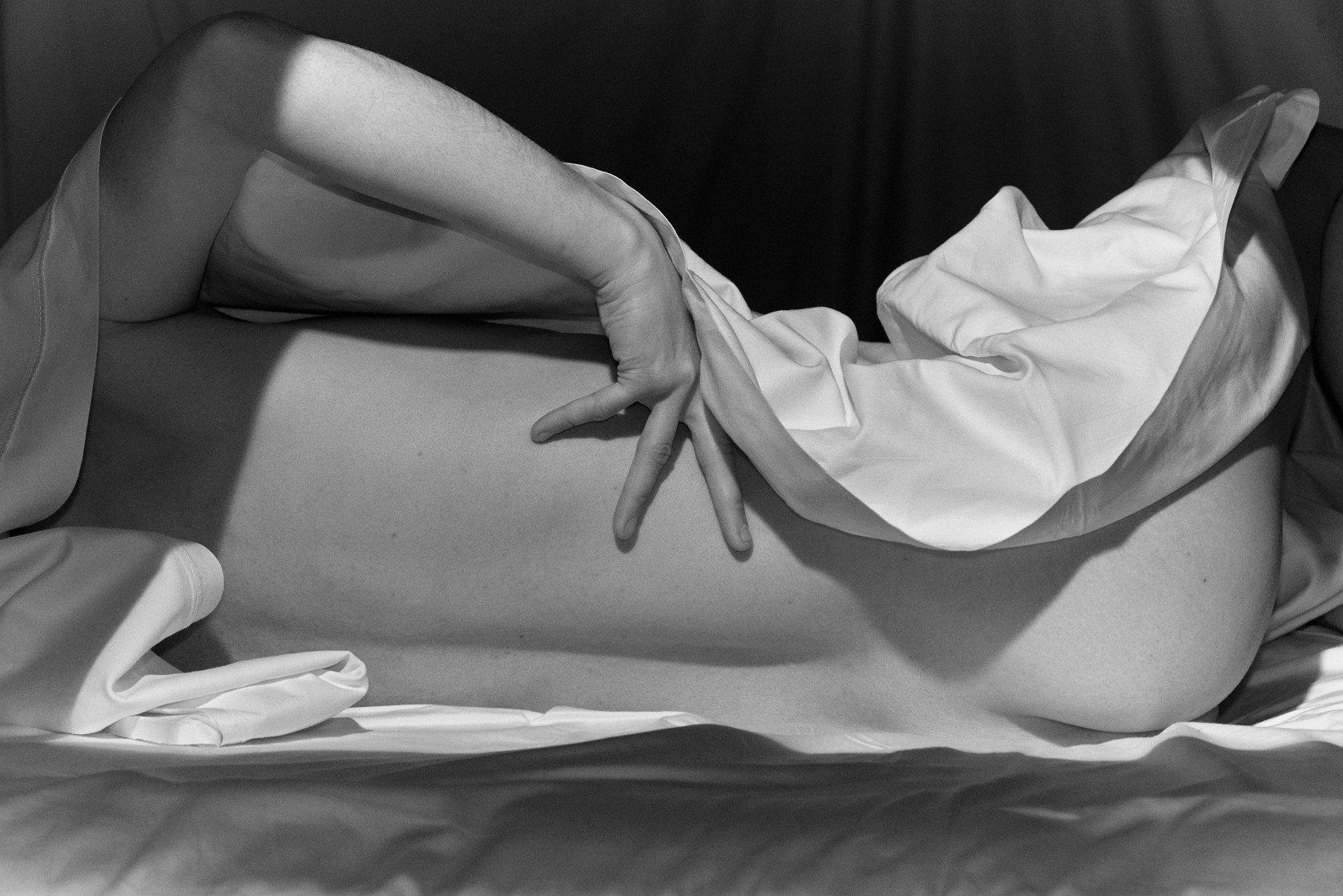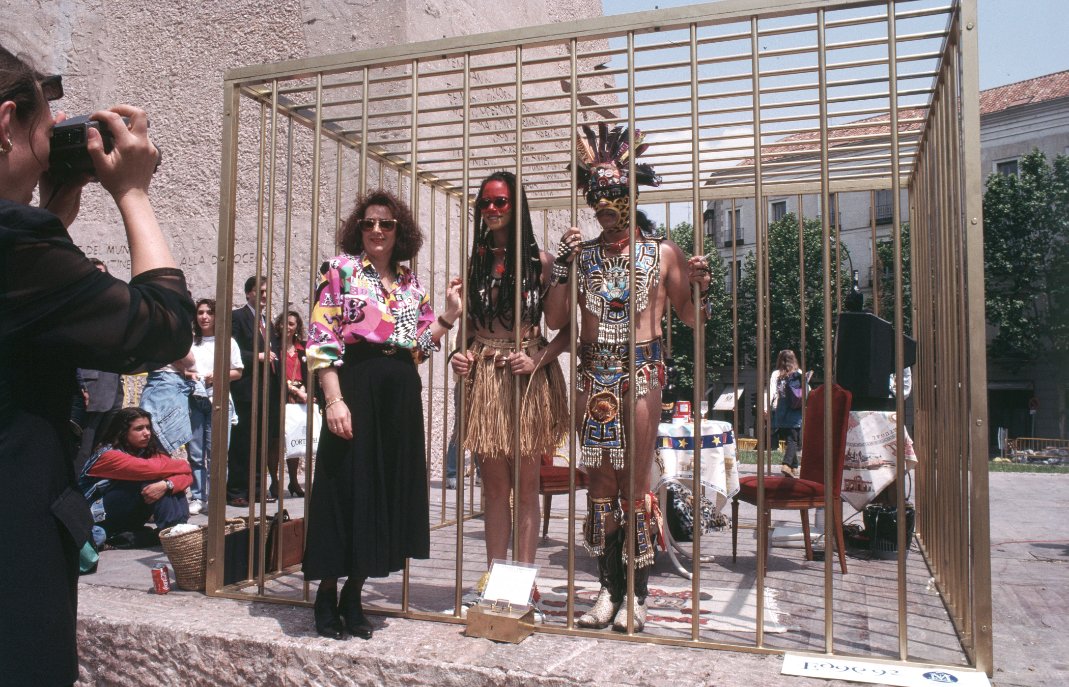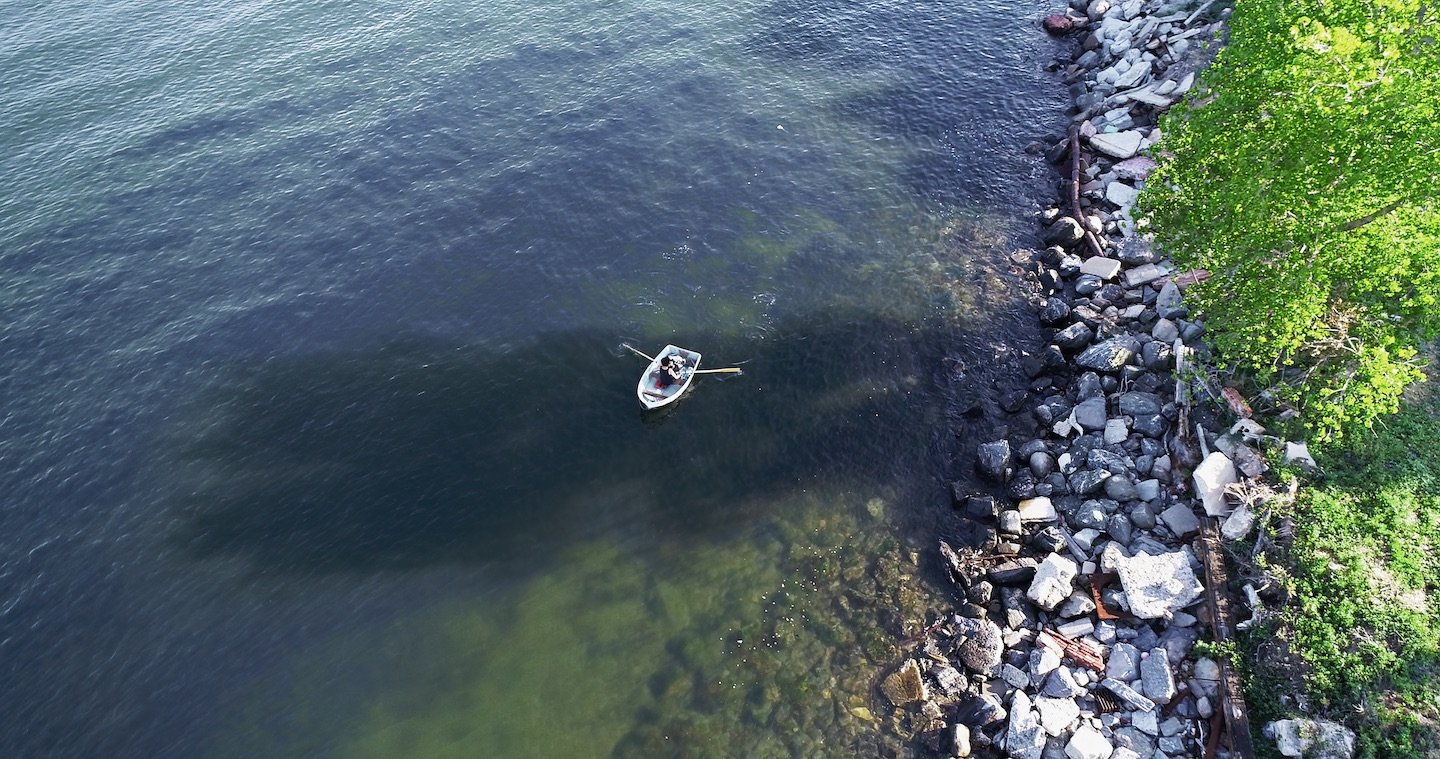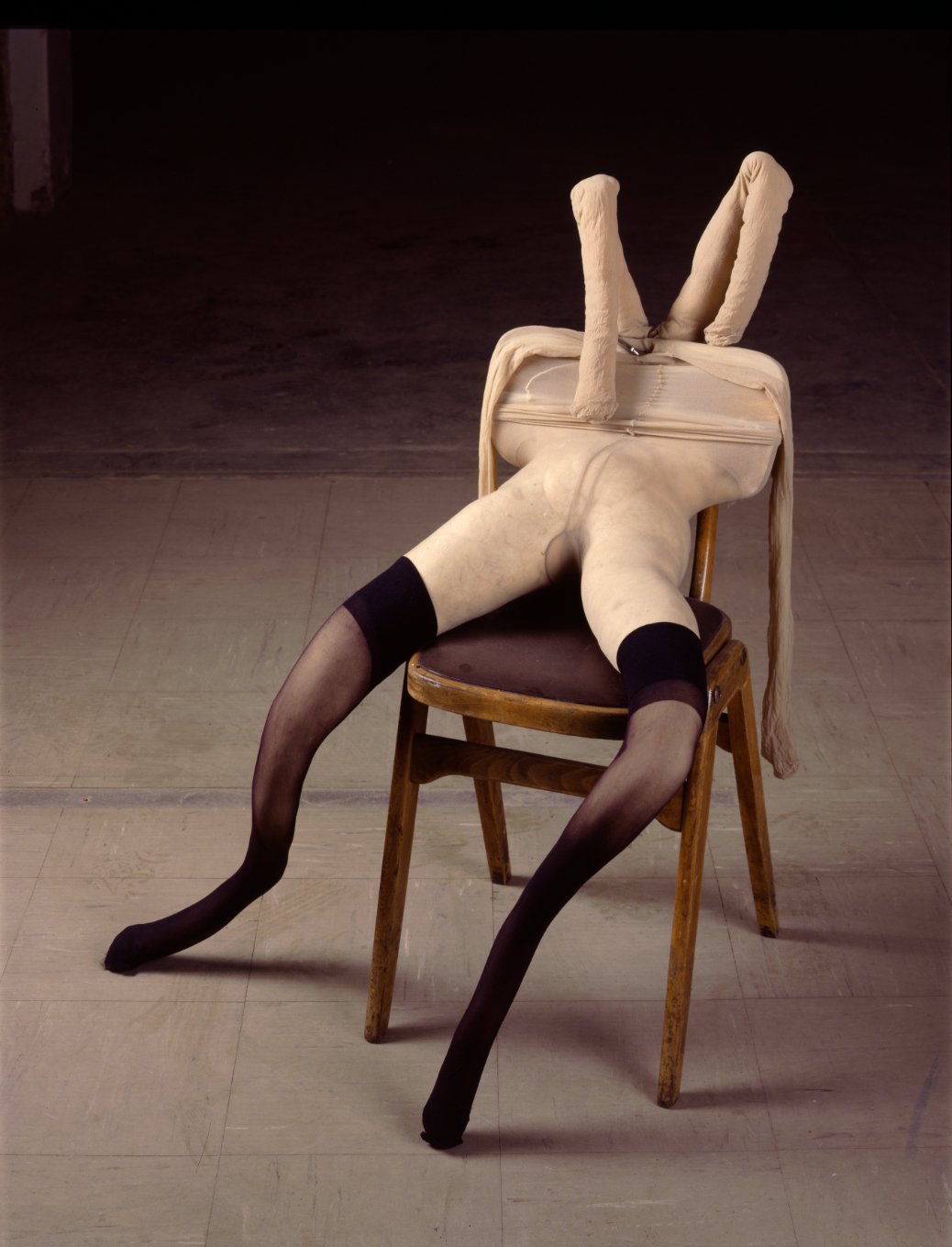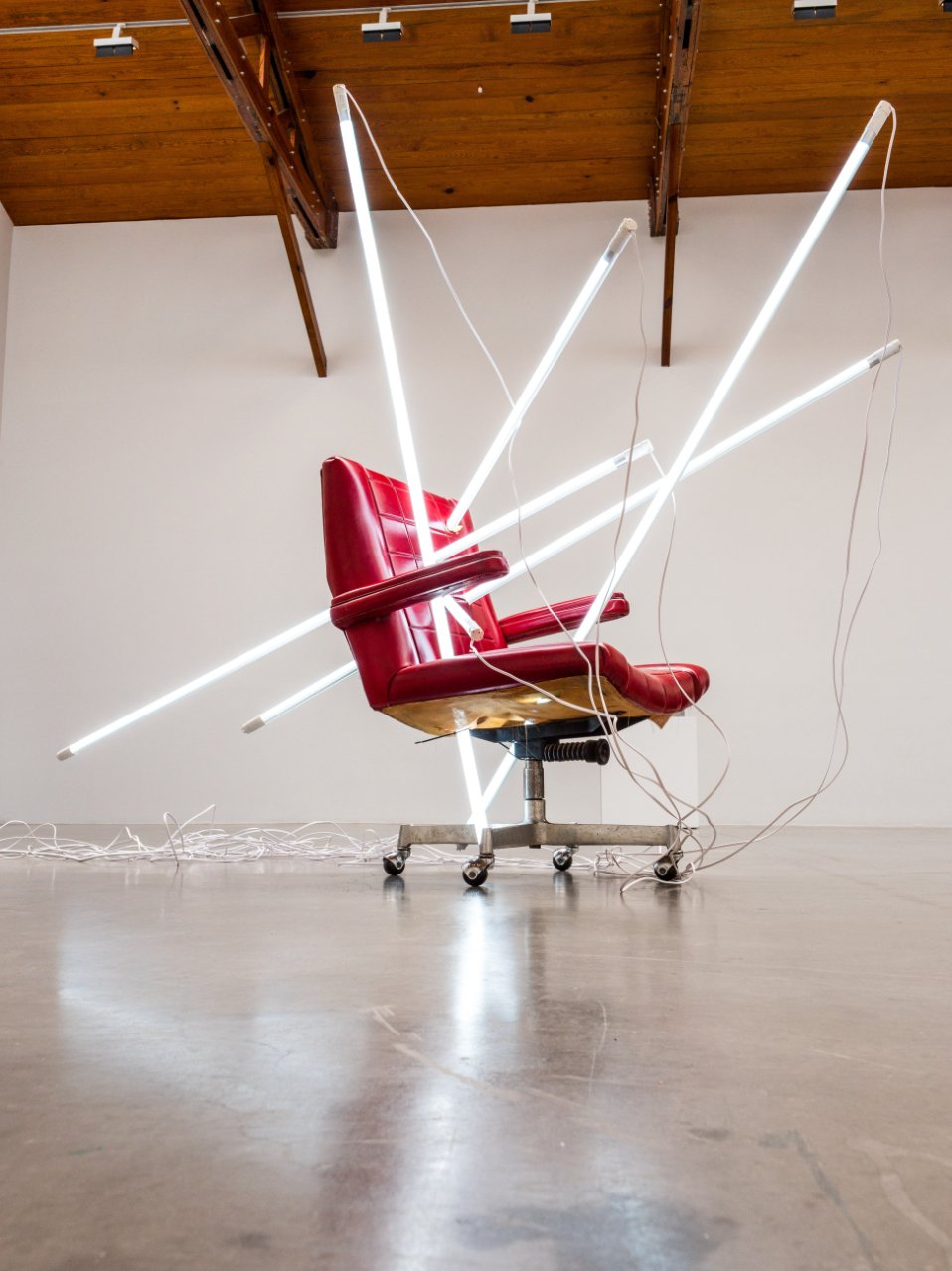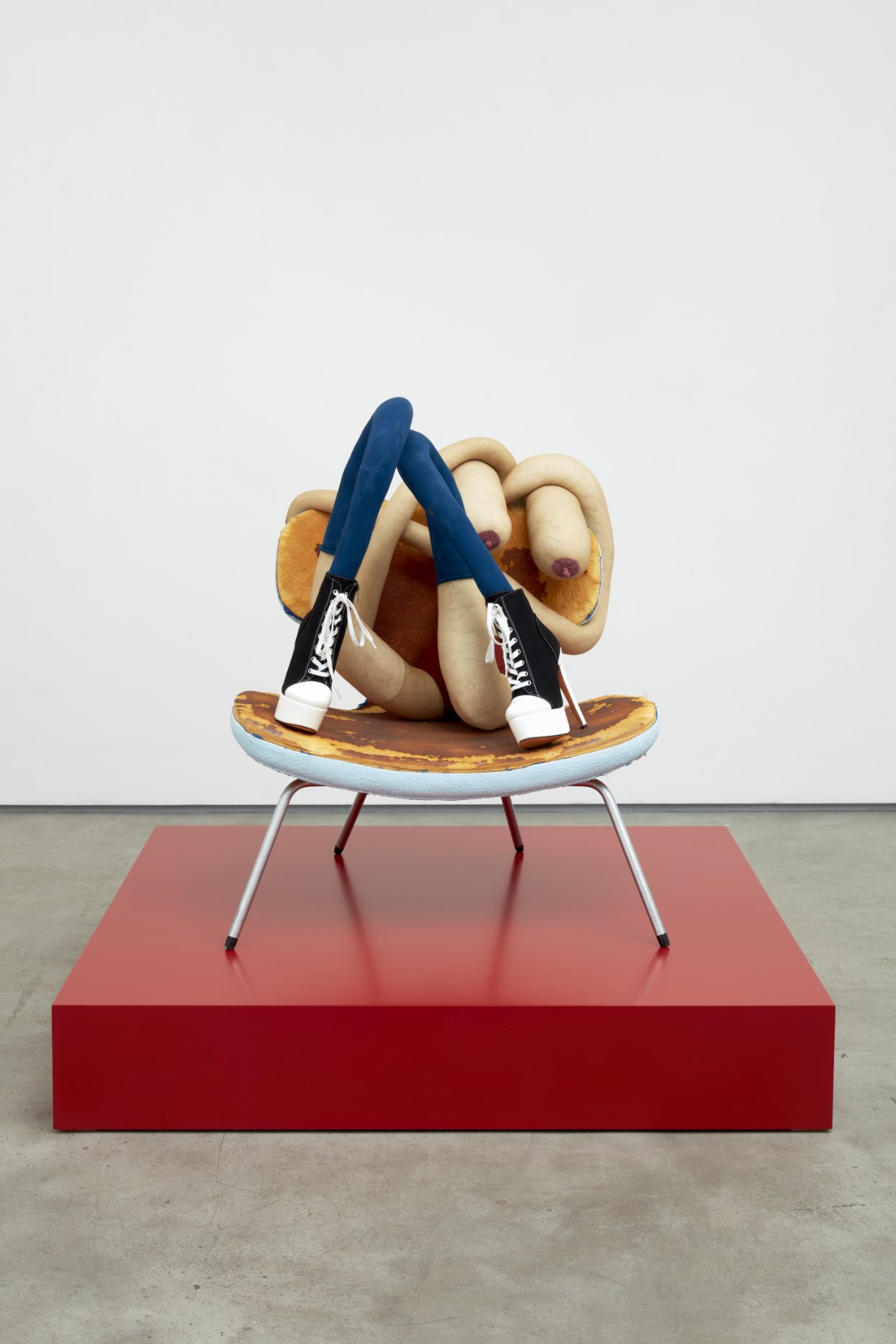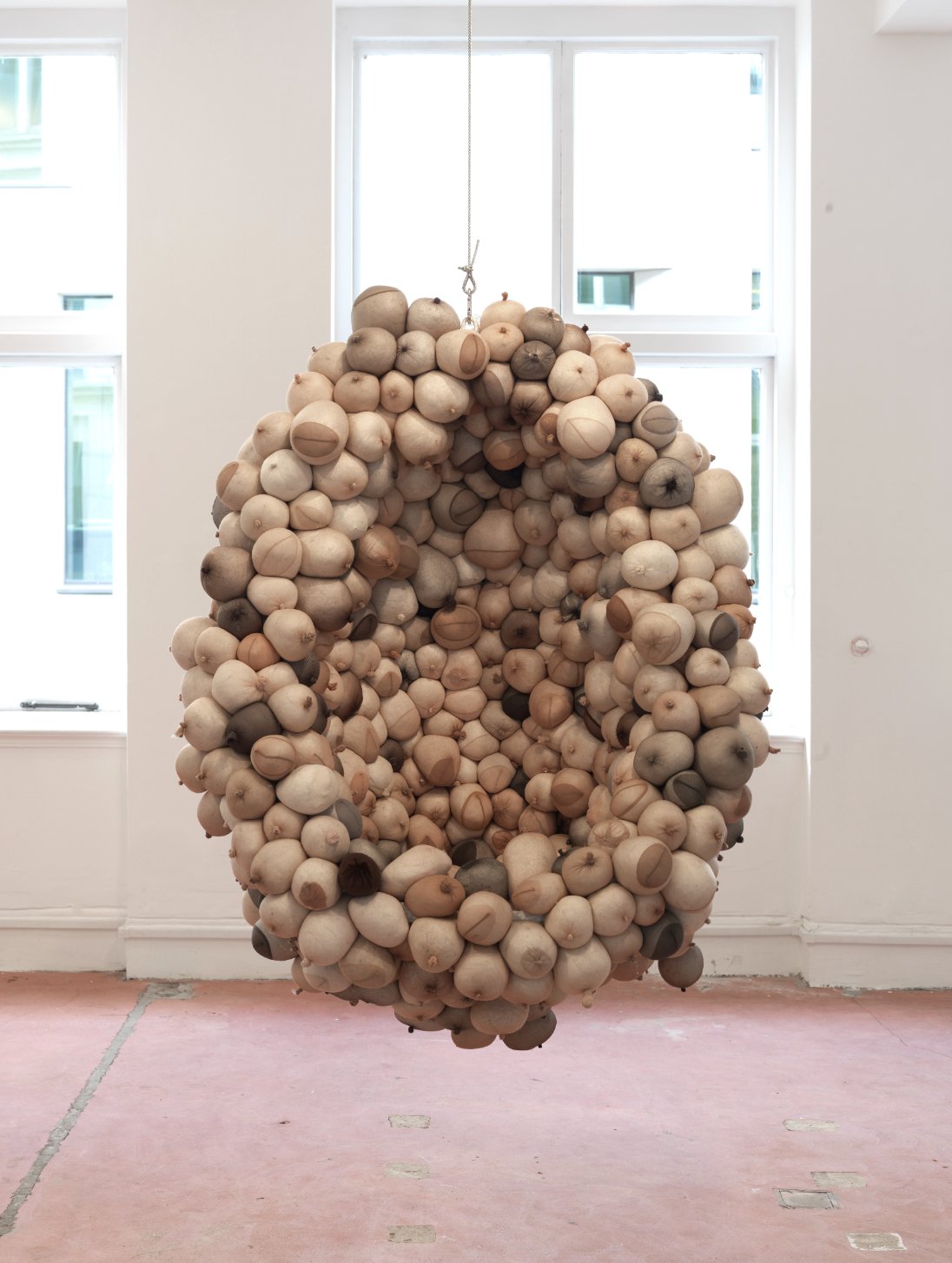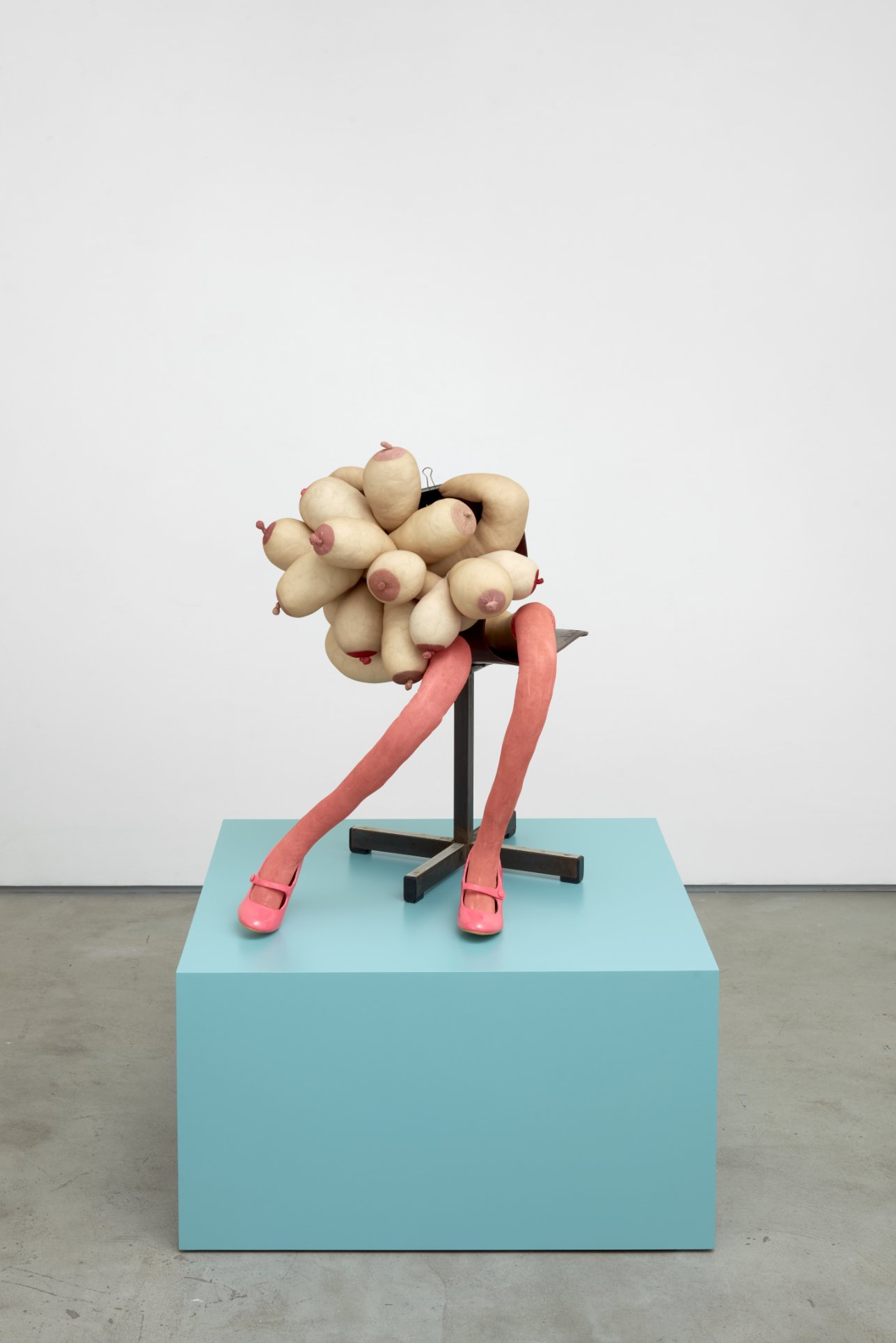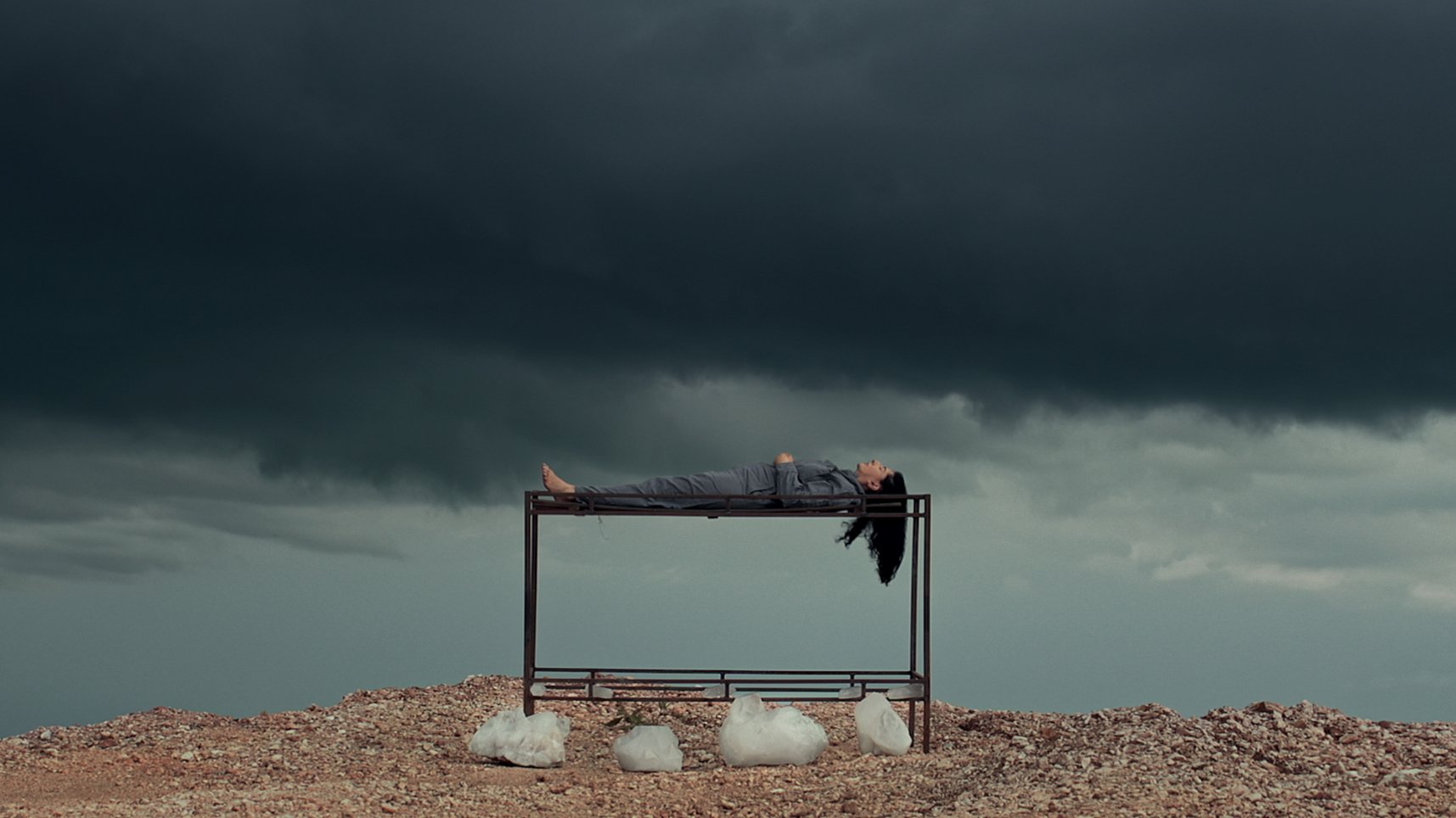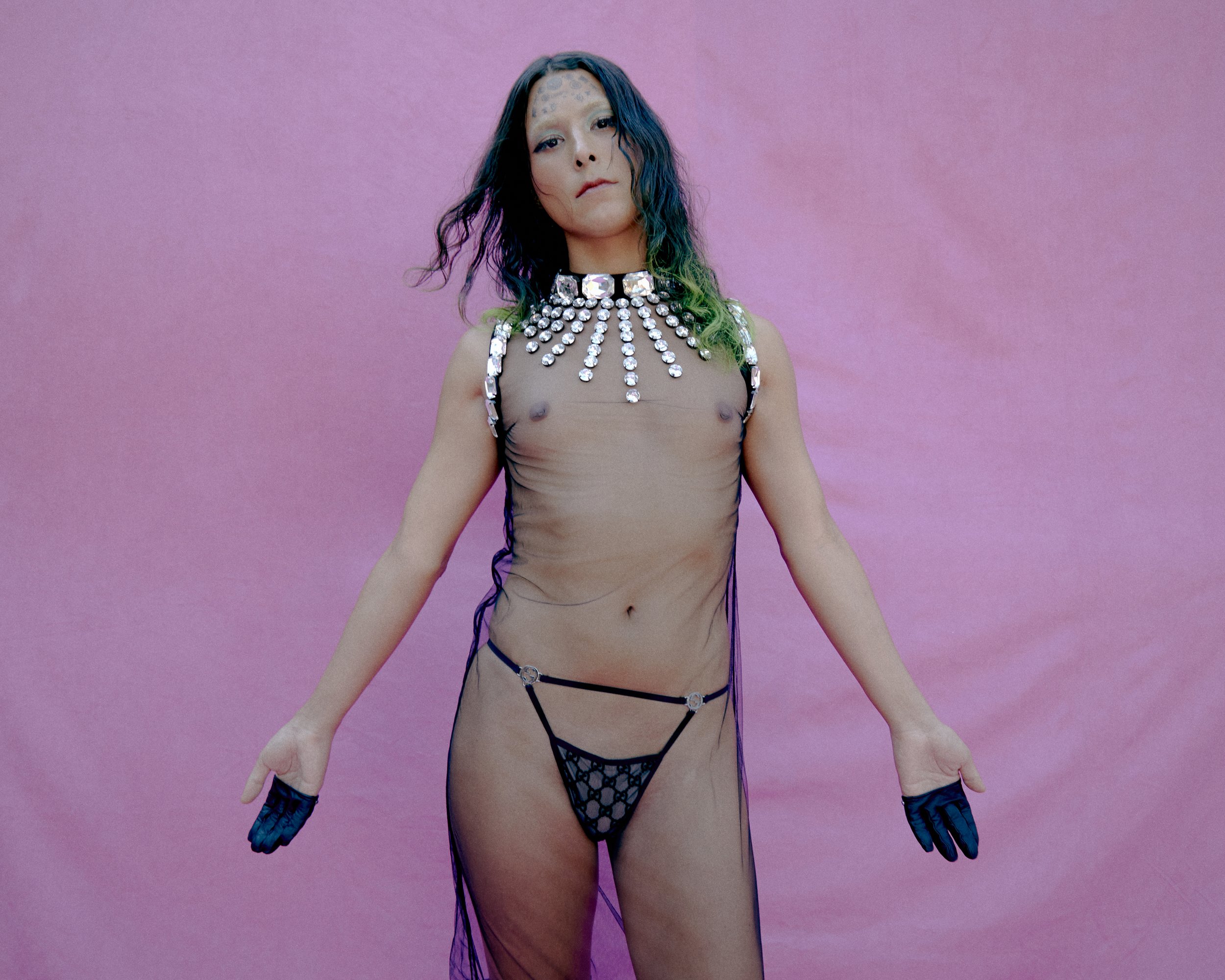For the past 15 years, Tim Biskup has been perfecting a style of monochrome graphite drawings on paper that has come to define his artistic practice. The abstract images he creates with a single block of graphite draw on modernist forms simultaneously reminiscent of the Isamu Noguchi and Henry Moore, but are executed with the whimsy and humor of contemporary flat field artists like and Joe Bradley and Jonas Wood. Biskup has garnered tens of millions of views of his live drawing videos posted to his @tbiskup account on Instagram. Many of the works created live on this platform will be exhibited as part of EMERGENT. Culled from thousands of finished drawings and studies Biskup’s Face Guts exhibition examines the process and breadth of this body of his work and includes works created throughout the 2020 pandemic and some as recently as the day of the opening event. Face Guts Gallery will also host a series of live drawing events that will allow the public to witness the spontaneous birth of Biskup’s graceful lines and will be integrated into the show as they are created. EMERGENT will be on view at Face Guts Gallery from December 9 to January 7 2024 with an opening reception on December 9th 5-8pm. 4136 Verdugo Road Los Angeles 90065
"Portraiture as Social Commentary" Showcases the Genre's Explosive Social Capital @ Persons Projects in Berlin
Zofia Kulik
Land-Escape I (2001)
silver gelatin print, 180 x 150 cm
Persons Projects’ latest group exhibition, Portraiture as Social Commentary, not only highlights the different aspects of the genre but also links together a variety of artistic perspectives. A portrait is a painting, a photograph, a sculpture, or any other representation of a person in which the face and its expressions are predominant. They reveal the presence of the subject viewed from the perspective of the artist – a merger of contrasts between what’s projected by one and perceived by another. These images become mirrors of many faces that reflect both the political and cultural undercurrents relevant to the time period in which they were conceived.
Portraiture as Social Commentary is on view through January 27th, 2024, at Persons Projects, Lindenstr. 34–35, 10969 Berlin.
Hugh Hayden Examines the Prosthetics of Power in Hughman @ Lisson Gallery
text by Tara Anne Dalbow
Upon entering Hugh Hayden’s Hughman exhibition at Lisson Los Angeles, you’re confronted by three interconnected rows of metallic stall doors, the same as you might find in a public restroom. The doors simultaneously invite you toward entry and expel you, intriguing as they are impersonal and ominous. Before you glimpse an object resembling art, you’re implicated in the hidden meaning, an active participant in its revelation. You’re immediately made aware of the physicality of your body, your relationship to the space, and the identity you present to the unknown system of order. Questions arise: Is this a gendered bathroom? Do I belong here? Who am I sharing the space with? The interactive element of opening and closing each door, maneuvering in, out, and between the confined, private spaces, renders engaging from a disembodied perspective nearly impossible. As the exhibition's title implies, there’s no leaving one’s hughmanity at the door.
My initial impression of imposition and interest follows me into the first stall, where a carved commode sprouts a bramble of thorny fir tree branches. The protrusion of sharp limbs obstructs further inspection; the effect is claustrophobic and disconcerting, and I back out cautiously. Behind the next door, a baby’s crib constructed from barbed wire and chain link fencing; behind another, interlocking wedding rings with Descovy pills [HIV antiviral] where the solitaire would be; and behind yet another, a classroom desk consumed entirely by abrasive white nylon bristles. Each object offers participation in a facet of contemporary American life under conditions as unwelcoming, uncomfortable, and caustic as the specular toilet seat.
The visceral materiality of the various textures, though not physically touched, commandeer the senses as the bristles scrape, the barbs prick, and the branches snag against your skin. Prongs, spurs, and skewers disrupt movement and threaten physical confrontation while also poking metaphorical holes in expectations and illusions. Here, the most fundamental promises of the American dream, like the right to an education, are rendered onerous, animating the question: for whom were these institutions made? If the skin you’re in determines your experience, and the object's surface or skin reflects the relative ease or distress of the encounter, then certainly not for the artist, a Black queer man, and by association, those like him.
Hugh Hayden
Cleanse, 2023
High density polyethylene bristles, cast resin
66 x 38.1 x 35.6 cm
26 x 15 x 14 in
© Hugh Hayden, Courtesy Lisson Gallery
Hugh Hayden
Start 'Em Young, 2023
Chain link fencing and hardware
142.9 x 141 x 81.3 cm
56 1/4 x 55 1/2 x 32 in
© Hugh Hayden, Courtesy Lisson Gallery
Hugh Hayden
Brainwash, 2023
PVC and nylon bristles
83.8 x 66 x 73.7 cm
33 x 26 x 29 in
© Hugh Hayden, Courtesy Lisson Gallery
As I continued around the room, the stalls began to feel more like dressing rooms with various identities available for perusal inside. Within one, a suit jacket and pants sewn from the rough and rigid bark of a cherry tree hang from a clothing rack. Elsewhere: a football helmet encompassed by boar hair, and still elsewhere: a bronze strap-on harness with a gun protruding from the crotch. The striking contrast between organic materials and those that are artificial and mass-produced recalls the antagonistic relationship between what’s natural and instinctual and what’s a consequence of sociopolitical structures. For whom are these spaces made?
Those capable of comfortably wearing the prosthetics of power appear as idealized, neoclassical male torsos carved from white silicone. They wear their means for control where their sex would be; for two, cocked pistols; for another, an abject skyscraper. A fourth iteration sees the male body replaced by a miniature basswood model church whose phallic steeple hangs limply across the shingled roof. In a nod to the dominant enterprise in Los Angeles, a director’s chair projects tapered wood penises in every direction. The appendages appear to both protect the seat of power and stage an assault on the unendowed who come too close. Their audacious vulgarity tempers the violence of the cultural implications and satirizes familiar tropes like toxic masculinity and the male impulse to think with an organ south of the brain.
When that door closes with a bang—emphasized by the acoustics of the room and made ominous by the presence of so many firearms—another door opens onto a bronze and acrylic sculpture of the waist and thighs of a man in navy uniform pants sporting a flashy leather belt, holstered gun, and handcuffs posed atop his white pedestal. Only when you move around the sculpture or are so moved by it do you see where the right side is sliced open to reveal beneath the uniform, armor, weaponry, beneath even the skin, the internal organs, veins, and bones within. The same veins in him that carry the red-blue blood between my heart and feet, the same stomach as the one that rumbles, hungry to be filled full when empty in Hayden, in him, in me. The man is twinned by another sculpture in the exhibition of a tree trunk spliced open to expose the biological contents of a womb carrying a luminous carved baby.
Hugh Hayden
Real Tree, 2023
Cherry bark on Zegna Suit
Suit: 99.1 x 91.4 x 17.8 cm
Suit: 39 x 36 x 7 in
© Hugh Hayden, Courtesy Lisson Gallery
Hugh Hayden
Eve, 2023
Cherry Bark and acrylic on resin, Black Walnut
63.5 x 38.1 x 25.4 cm
25 x 15 x 10 in
© Hugh Hayden, Courtesy Lisson Gallery
Their combined effect illuminates how stripped of societal status, we are of the same nature and origin and made from the same stuff. As intricately connected to one another as we are to the trees, the earth from which the trees grow, and the animals, like the stuffed buffalo in another stall, roam. Hanging together in a red-flocked closet, two raceless, genderless, crimson rib cages tenderly embrace—as the only forms made from material gentle enough to hold and be held. The fellow feeling carries me out of the closet, the stall, the gallery, and I re-enter the world a little more human than I was only an hour before.
Hughman is on view through January 13 @ Lisson Gallery, 1037 N. Sycamore Avenue, Los Angeles
Hugh Hayden
The Audition, 2023
Bald cypress, steel hardware and canvas
149.9 x 188 x 154.9 cm
59 x 74 x 61 in
© Hugh Hayden, Courtesy Lisson Gallery
Trevor Yeung's First Solo Show at Gasworks In London Explores how emotional and behavioural conditions play out in our everyday life
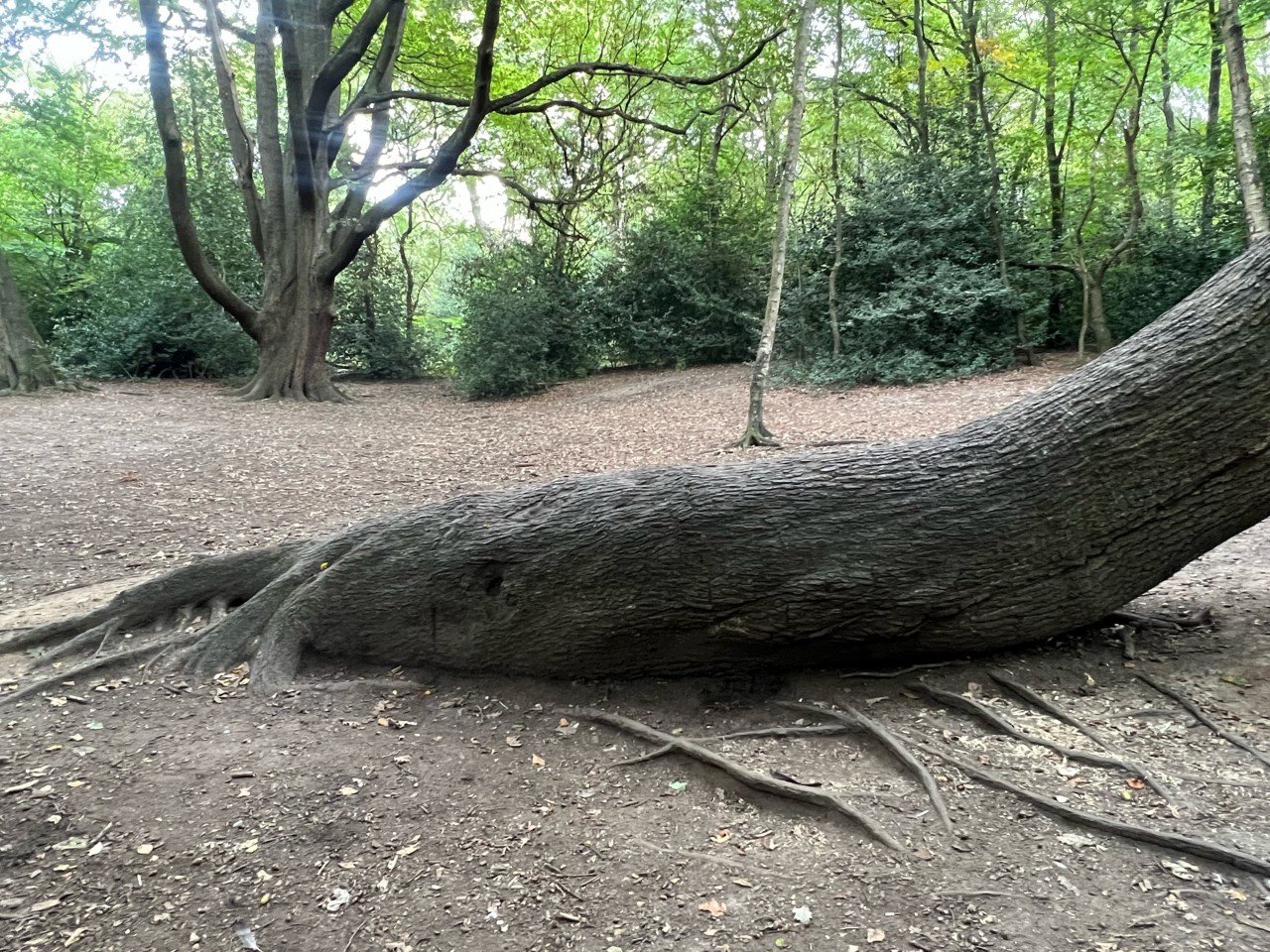
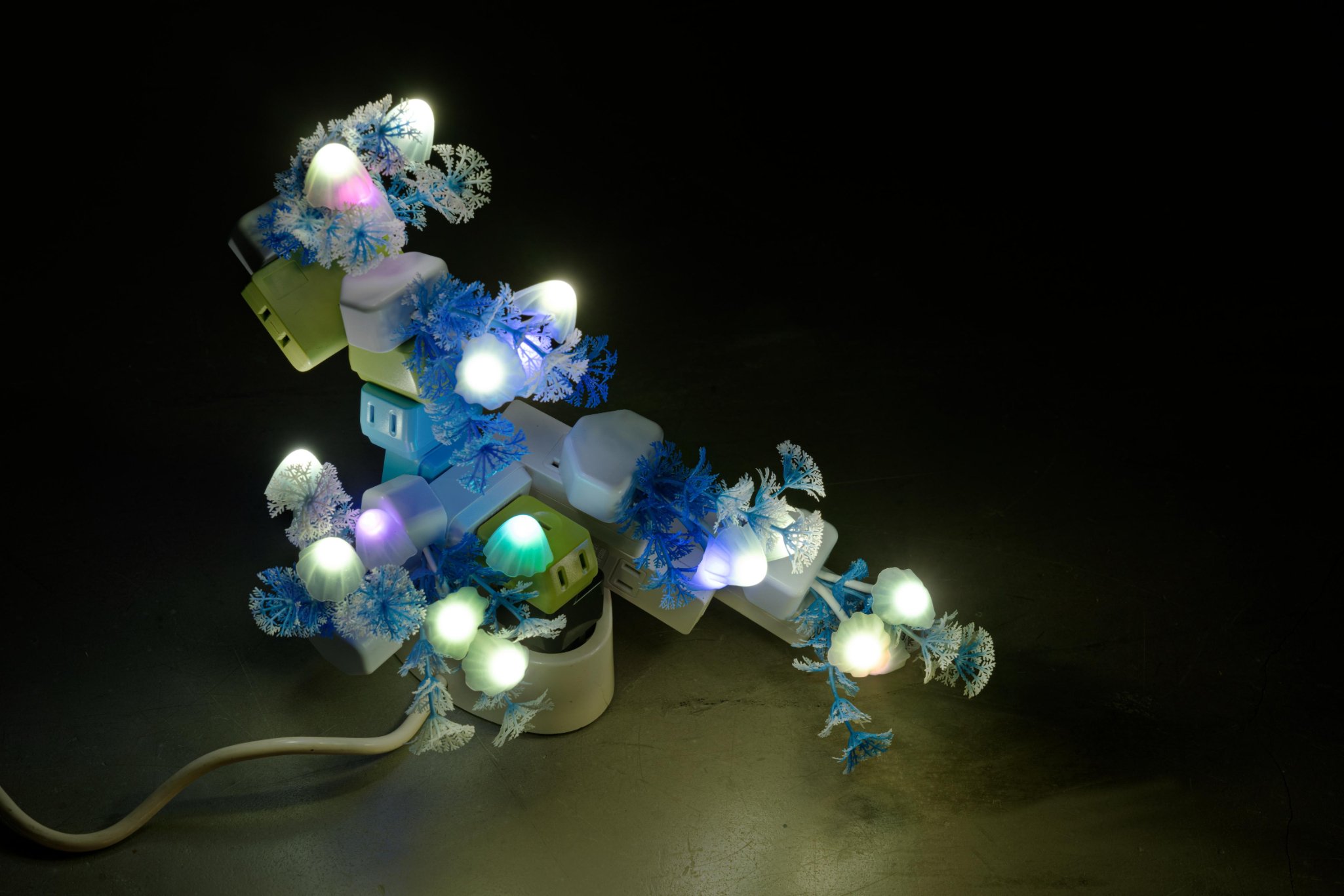

Yeung’s exhibition at Gasworks delves into the complex social dynamics and interspecies relationships in London’s gay cruising areas. Central to the exhibition is a scale recreation of Hampstead Heath’s infamous “fuck tree”, a notorious ageing oak whose sturdy trunk is bent low and whose bark is polished smooth following its regular nocturnal use. Cast in soap, Yeung’s version fills the dark gallery with an earthy, moist scent – evoking a liminal space of desire, longing, and shame.
Glistening and ephemeral, the soap replica embodies the tree and presents it as an intimate object to be used and consumed. Slowly worn away by physical interactions, it touches and rubs against out bodies, smoothing and disintegrating over time.
At Gasworks a sense of quiet reverie is accompanied by additional presences of animal and nature as Yeung further examines his emotional connection with Hampstead Heath. The walls are painted in a cold, grey gradient, similar to the transient moment just before fresh morning light hits the ground. Acorns glisten in the gentle light, and the sound of water splashing on
the ground can be heard. Together, these elements combine to explore the fluid interplay between night and day, public and private, concealing and being seen.
Soft Ground is on display through December 17th at Gasworks, 155 Vauxhall St, London
Nora Riggs Presents a Multifaceted View of Camaraderie and Intimacy in Touchy-Feely @ Emma Gray HQ
Nora Riggs, Couple Admiring Themselves in a Mirror, 2023. Image courtesy of Emma Gray HQ.
Emma Gray HQ presents Touchy-Feely, an exhibition of new paintings by Nora Riggs. Her depicted scenes present a multifaceted view of camaraderie and intimacy, reminding us of the mild indignities of youth and adulthood. While not autobiographical per se, her paintings emerge from an invented reality adjacent to our own. At one step remove, Riggs distills and alters it through colors, textures, shapes, and patterns that suggest aesthetics from another era without the pungent drifts of nostalgia. That her ideas rise like froth before she sleeps offers insight into her paintings. They are condensed memory images, emblematic of a time and place, at once playful and densely psychological. Her deft use of paint supports this mood, articulating an individuated vision about fugitive memories. Which is another way to say that she devotes her craft, one so specific to her sensibilities, to the complexity (awkwardness, tenderness, oddness, funniness) of intimacy.
Touchy-Feely is on view through January @ Emma Gray HQ, email info@emmagrayhq.com or call 310-497-6895 to book a visit
Ewa Juszkiewicz Subverts Historical Conventions through Pictorial Invention for In a Shady Valley, Near a Running Water @ Gagosian
Installation view © Ewa Juszkiewicz. Courtesy the artist and Gagosian.
Gagosian presents In a Shady Valley, Near a Running Water, an exhibition of new paintings by Ewa Juszkiewicz in Beverly Hills. This is Juszkiewicz’s first solo exhibition in California and her second with the gallery, following In vain her feet in sparkling laces glow in New York (2020–21).
Juszkiewicz’s oil paintings of women begin with historical portraits, appropriating their style while subverting their conventions through fantastical and discomforting pictorial interventions. Emulating representations of women painted in the Grand Manner style popular in Western art from the eighteenth through the early nineteenth century, she re-creates the poses, fashion, and settings of her sources while transforming their scales and palettes and adding details that point to the artifice of femininity’s stereotypical markers.
In a Shady Valley, Near a Running Water is on view through December 22 @ Gagosian, 456 North Camden Drive, Beverly Hills
Jota Mombaça Uses Berlin's Decompositional History to Slow Time for Mourning @ CCA Berlin
A CERTAIN DEATH/THE SWAMP, Jota Momaça’s exhibition at CCA Berlin – Center for Contemporary Arts, was conceived, at first, through extensive conversations around the curious topography of Berlin, said to be entirely built atop drained wetlands. From swamp to city, a teleology of progress, a survival scheme, emerges. Looking at the devastating flash floods of 2021 that affected parts of Belgium, Germany and surrounding countries, Mombaça then conjures up reversal—what of cities that again turn into swamps, a form of dissolution fascists went in terror of (‘Drenare la palude!’, once howled a determined Benito Mussolini) throughout the twentieth century? From Berlin’s locality, we shift our gaze towards a planetary predicament: that of atmospheric phenomena continuously threatening terminal collapse across disparate geographies. until the last morning (2023), a newly commissioned video work, was shot among the mangroves and marshlands of Pará, in the Brazilian Amazon. Covering about 700,000 hectares, these mangroves and marshlands depend on a constant influx of fresh water from rainfall and from the Guajará Bay rivers and streams. To that end, the camera pans to the sky, observing cloud formations, their movements and maneuvers. The ecosystem’s survival depends on this unpredictable choreography—to observe the weather is thus to forecast whether or not a line of continuity can be drawn into the future.
A CERTAIN DEATH/THE SWAMP is on view through December 2nd at CCA Berlin, Kurfürstenstraße 145, 10785 Berlin.
"Magic of The North" Retrospective Delves into Munch's Lights and Shadows @ Berlinische Galerie in Berlin
Edvard Munch challenged his contemporaries with the radical modernity of his paintings, especially in Berlin, where the Norwegian symbolist exerted a big influence around the turn of the century. The exhibition Magic of the North is a partnership with the MUNCH in Oslo. It tells the story of Edvard Munch and Berlin, illustrated by paintings, prints, and photographs.
The German capital was in the grip of a fervor for all things Nordic. Even the conservative Association of Berlin Artists invited the young artist, as yet unknown, to put on a solo exhibition in 1892. Viewers were shocked by the bright colors and perceived the paintings as sketchy. The show was forced to close shortly after opening. Munch’s works polarized people. The artist delighted in this public attention. He moved to the Spree, living and working in the city again and again between 1892 and 1908. The “Munch Affair”, as the press sardonically labeled the scandal, is seen as the beginning of Modernism in Berlin.
Magic of the North is on view through January 22nd at Berlinische Galerie, Berlin’s Museum of Modern Art, Photography and Architecture Alte Jakobstraße 124–128, 10969 Berlin.
Nasan Tur Interrogates the Uses of Power through Lifelessness in Hunted @ Berlinische Galerie in Berlin
Nasan Tur deals with the political and social conditions of our time. His works are experimental arrangements that make ideologies, social norms and behavior patterns visible and expand them to include possibilities for individual action. To do this, he examines statements, gestures and images that he finds in the media and public space and condenses them into miniatures of current social crises and discourses. The focus is on the question of how predetermined role models influence us and when we are ready to cross boundaries and actively change social patterns in the face of oppression, powerlessness and manipulation.
New works were created for Hunted, his current exhibition at Berlinische Galerie, which deal with questions of the exercise of power and its legitimacy. Why do people kill? What violence lies within us, and how and under what circumstances is it activated? By arranging the works in space, Tur creates images that express an ambivalent attitude toward death and life. They range from confronting one's own inner demons to questioning hunters and the act of killing to the careful staging of lifeless animals in space.
Hunted is on view through April 1st at Berlinische Galerie, Berlin’s Museum of Modern Art, Photography and Architecture Alte Jakobstraße 124–128, 10969 Berlin.
Rachel Gregor Presents Summer as an Inescapable Purgatory for Teenage Girlhood in Still Summer @ Hashimoto Contemporary
Rachel Gregor, Stickleback, 2023. Images courtesy of Hashimoto Contemporary.
The rules of adolescent girlhood are convoluted and often unspoken, something painter Rachel Gregor seeks to highlight in her first solo exhibition with Hashimoto Contemporary, Still Summer. The Kansas City-based painter portrays the summer before ninth grade (remembered through overexposed point-and-shoot film photos) as the tense passage into true young adulthood: newfound independence is at odds with a lack of agency, infantilization discredits budding knowledge about the world. Based on versions of herself, the characters in these new paintings are wolves in sheep’s clothing, rebelling to escape their physical and psychological barriers, or at least survive the small hell of Arcadian juvenility.
Still Summer is on view through December 2 @ Hashimoto Contemporary, 2754 S La Cienega Blvd. Los Angeles, CA 90034
Ken Gun Min Fuses a Cosmopolitan Personal History with Lush, Floral Landscapes in Sweet Discipline from Koreatown @ Shulamit Nazarian
Images courtesy of Shulamit Nazarian
Shulamit Nazarian presents Sweet Discipline from Koreatown, an exhibition of new works by Ken Gun Min. In the artist’s newest paintings, lush, floral landscapes and sensitively rendered, imaginative portraits are adorned with beads and embroidery. Born in Seoul, South Korea, Min has led a global existence, moving from Zurich and Berlin to San Francisco before eventually settling in Los Angeles's Koreatown. This cosmopolitan personal history informs the social and political narratives of Min's work, which explores emotion, otherness, and an intimate connection to place.
The paintings in this exhibition exemplify Min's intersectional engagement with the nuances of queer experience as an Asian man and his deeply personal approach to often unexplored social spaces and histories. Yet even as he mines his own feelings and experiences, Min pulls a wide range of references and associations into the work to consider the ways that power, race, and sexuality play into both local and global geopolitics. Certain works reference the history of conflict between Asia and Europe, the dynamic history of relations between different minority groups in urban conflicts, and the intersection of sexual and racial prejudice. By exploring stories that span contemporary reality and earlier historical moments, the paintings expand outward from Min's personal journey through Los Angeles to address the sublime encounter of splendor and darkness in the human experience.
Sweet Discipline from Koreatown is on view through December 20 @ Shulamit Nazarian, 616 N. La Brea Avenue Los Angeles CA
Daniel Arnold: New York Life Is Sustained by Forward Motion @ New York Life Gallery
Attuned to moments in the city that many fail to notice, Daniel Arnold: New York Life documents the personalities who rush, stumble, and idle through every sidewalk, subway, bodega, park, beach, and ferry throughout the five boroughs. From his vantage point—a camera perched on scaffolding in the rain or nestled to his torso amidst a crowd—he creates a time capsule of the city that is simultaneously unsentimental and imbued with sublime oddity.
Arnold’s photographs feature a broad cast of characters improbably brought together on the street. People who appear archetypal or stereotypical at first glance are revealed for their idiosyncrasies—exposing the uncanny nature of unassuming subjects. Through his candid lens, metropolitan scenes steeped in cliché are distilled back into the raw, bizarre, humorous, and miraculous.
In Arnold’s universe, there is no right moment, wrong moment, or perfect shot; there is only the impulse to load a new roll and take the next picture. His work is sustained by this forward motion. While each image is an index of a particular place and time, the breadth and scope of Arnold’s photographs form a composite image of city life today. In New York, Arnold has found an infinite muse
Daniel Arnold: New York Life is on view through December 22nd @ New York Life Gallery 167-169 Canal Street, Floor 5, New York,
Read Our Interview Of Artist & Curator Mieke Marple On Bridging the Digital & Traditional Worlds of Art →
NFT Tuesday LA co-founder and former Night Gallery co-owner, Mieke Marple is a Los Angeles-based artist and writer determined to navigate what she calls the “insurmountable chasm” between the physical and digital art worlds.
In her passionate mission to reconcile both the analog and the digital, Mieke has recently curated an impressive exhibition titled Interreality, showcasing 35 artists from the pioneering digital space mixed in with traditional established artists. Produced by Steve Sacks, founder of bitforms gallery and Aubrie Wienholt, founder of PR for Artists, Interreality is simply a tour de force.
A kindred spirit and peer curator, I was thrilled to interview Mieke to speak about the exhibition as we tackled notions of provenance, embodied experiences, collecting art and feminism. Read more.
Curt LeMieux "Heroes" @ White Box LA
WhiteBox.LA, renowned photographer Joshua White’s curatorial project, presents its second exhibition, Curt LeMieux: HEROES at The Desmond Tower from November 18 through November 30, 2023. A group of minimal, puerile paintings of classic LP albums, including the iconic album cover art from artists ranging from Dusty Springfield to Frank Sinatra, Patti Smith, The Rolling Stones, and Black Sabbath.
The works speak of LeMieux’s adolescent obsession with Rock & Roll imagery and his own teenage sexuality as he came of age on the outskirts of the rust belt on the late 70’s “Growing up working class on the outskirts the rustbelt, I had no access whatsoever to fine art. I had no idea that art existed. Nor did I relate much to regional expressions of culture. Large Green Bay Packer themed snow men littered every other yard. I first saw the cover of Meatloaf’s Bat Outta Hell while in a waiting room at Saint Luke’s Hospital in Duluth, Minnesota. I remember the experience with vivid detail. As a bored and impetuous child, this artwork excited me to my core. It was pop of color in an overwhelmingly drab setting. It was life and it was death stuffed together in one horrible little scene. It was dramatic and forceful. The paintings in Heroes paintings pay homage to the role music played in my development as a visual artist. I do not want to capture an exact likeness of a given album cover or a given artist. The forms are deliberately exaggerated. The characters are somewhat gawky and jovial; reflecting the ostentatious and campy attributes of the source material,” says LeMieux.
The exhibition incorporates live music, with a performance by Randy Randall of No Age Mark at the opening event on November 18 and a closing event featuring musician Ian Svenonius in conversation with LeMieux.
Allison Katz Creates a Cosmos of Disparate Images in Westward Ho! @ Hauser & Wirth
Allison Katz, Truth, 2023.
In ‘Westward Ho!’ Allison Katz creates a cosmos by overlapping disparate images and narratives from visual culture, her own past, and the coincidences that gather around her. The title firmly locates us, with tongue-in-cheek undertones, inside Hauser & Wirth in West Hollywood, California. It was Katz’s specific request to exhibit here, in a desire to engage with its associated cultural mythologies: ‘Hollywood is a big picture and I should like to know what it means to walk the walk, or drive the drive, of the Pacific coast, with its last–resort, up to the edge, atomized light...if this is the birthplace of the silver screen, then it’s a chance to test out painting’s irrefutable material and impure surface, its porous consciousness...’ The title blends historical and literary allusions, tracing back originally to the calls made by Elizabethan ferryman as they navigated the River Thames in search of passengers. As Katz writes: ‘I’m using Westward Ho! as a call out, a whoop of exuberance, a question hollered across time and tradition to see who and what answers, as if to test the idea that painting is a conversation.’
Allison Katz, Sheepish, 2023.
Throughout the exhibition Katz deploys a constantly evolving set of techniques and source materials. Echoes, rhymes and serendipities erupt; meaning is reordered and unexpected genealogies converge. ‘West’ is the neighborhood in which the gallery is located, the direction Katz’s apartment faces in London, a catch-all term for a geopolitical system in the midst of being challenged, and an alias for the pastoral patch of English countryside where she worked in residence (the West Country). While preparing for the exhibition she also visited the ruins of Pompeii (in the context of the institutional program Pompeii Commitment), where the discovery of wall paintings buried under ash continues to play a central role in the origin story of Western figuration.
Allison Katz, Sleeping and Weeping in the Fourth Style, 2023.
Westward Ho! is on view through January 5 @ Hauser & Wirth West Hollywood, 8980 Santa Monica Boulevard West Hollywood CA 90069
Vincent Ferrané Inverts the Intimate Solitude of the Bed in Embedded @ La Cité Gallery in Paris
In the series Embedded, presented by photographer Vincent Ferrané realized in collaboration with performer Pauline Lavogez, the confined space of a bed transforms into the profoundly minimalist stage of a performative expression, an "embodied experience." The project is a mosaic of images that relies on a unique space-time of experimentation, intertwining photographic and choreographic ideas much like on an editing table.
Derived from ordinary situations inherent to this intimate and universalizing playground haunted by our fantasies, fears, or passions, the created images offer enigmatic representations in seclusion: ethereal presences, bodies, and suspended faces seize hold of this original setting and transform it into a microcosm, a topography. A mattress-crater hollowed by a fist, clothes resembling geological folds, an improvised refuge beneath the sheets, and ghostly silhouettes come together to give shape to a bed-landscape.
Drawing its name from the words "bed" and "embedded," which in our media-driven age convey the idea of incorporation and embodiment, the series Embedded explores, within the perfect rectangle of the bed, the place of the body, both social and metaphorical. Between pose and pause, the series Embedded draws from the attributes of live performance to script a mosaic of black and white still images, framing the gaze on fragments of bodies, faded, trapped in the penumbra.
Embedded is on view November 9th through November 16th at La Cité Gallery, 71 rue Réaumur 75002, Paris.
Tomorrow, I Will Become an Island Charts Coco Fusco's Radical Path of Social Reckoning @ KW Institute in Berlin
Tomorrow, I Will Become an Island is the first major retrospective of Cuban-American artist Coco Fusco (b. 1960, US). For more than three decades, she has been a key voice in discourses on racial representation, feminism, postcolonial theory, and institutional critique. The exhibition seeks to trace the profound influence that Fusco’s work has had on contemporary art discourses in the Americas and Europe. To do so, it features a broad selection of the artist’s videos, photography, texts, installations, and live performances from the 1990s to the present day.
With her multidisciplinary practice, Fusco explores the ways that intercultural dynamics affect the construction of the self and ideas about cultural otherness. Her work is informed by multicultural and postcolonial discourses as well as feminist and psychoanalytic theories. Her investigation of intercultural dynamics has led her to develop art projects about ethnographic displays, animal psychology, sex tourism in the Caribbean, labor conditions in free trade zones, suppressed colonial records of Indigenous struggles, and the military interrogation techniques used in the war on terror. Her more recent work focuses on the relationship between poetry and revolutionary politics in Cuba.
The exhibition is loosely structured along these various interconnected themes. As such, Tomorrow, I Will Become an Island shows the breadth of Fusco’s artistic practice that is highly relevant considering current political and cultural debates in Germany and beyond.
Tomorrow, I Will Become an Island is on view through January 24th, 2024, at the KW Institute for Contemporary Art in Berlin at Auguststraße 69, 10117 Berlin, Germany
Narrated Entirely In Her Own Voice, Sarah Lucas' Happy Gas Exhibition @ Tate Modern In London Is A Must See
Sarah Lucas
Bunny, 1997
Courtesy the artist and Sadie Coles HQ, London
Since 1990, Sarah Lucas has been creating art that distorts everyday objects to reveal their expressive qualities. In her exhibition, she uses items like bananas, lightbulbs, concrete, fish, a car, tights, chairs, tabloid newspapers, and cigarettes to explore universal questions about human existence, including origins, sex, class, happiness, and mortality. While her work is deeply personal, it also addresses common themes and could relate to anyone. The exhibition goes beyond her association with the 1990s Young British Art scene and offers a comprehensive look at her art over nearly 35 years, featuring self-portraits and her evolution as an artist.
Lucas challenges artistic conventions through her choice of subjects and materials, often manipulating them with care despite their casual appearance. Her work evokes a mood of grit, shock, and play, frequently touching on themes of sex, smoking, and food, punctuated by both dark and pleasurable elements. Lucas's subversion of social realism exposes the laughable and demeaning aspects of class and gender stereotypes. Her art combines explicit metaphors, unusual body forms, and oversized food to create a magical quality, resulting in a defiant, joyful, and vibrant atmosphere.
Happy Gas By Sarah Lucas is on view through January 14th, at Tate Modern, Bankside, London
Marina Abramović Hosts Her First Solo Show @ Royal Academy Of Arts In London
Marina Abramović
The Current, 2017
Video; 1 hour 35 mins
Courtesy of the Marina Abramović Archives
Originally trained as a painter at the Academy of Fine Arts in Belgrade, Marina Abramović turned to performance in the early 1970s and established the hallmarks of her practice: every day actions ritualised through repetition and endurance. She is a pioneer in using the live body in her work and has consistently tested the limits of her own physical and mental tolerance. Abramović has continued to navigate a space between the personal and the social, the conceptual and the existential, the physical and the spiritual. From 1975–88, Abramović collaborated with her then partner, the German artist Ulay, exploring male and female dualities. Returning to solo performances in 1989, the artist further tested boundaries with the creation of performative objects, performances to camera and audience participation.
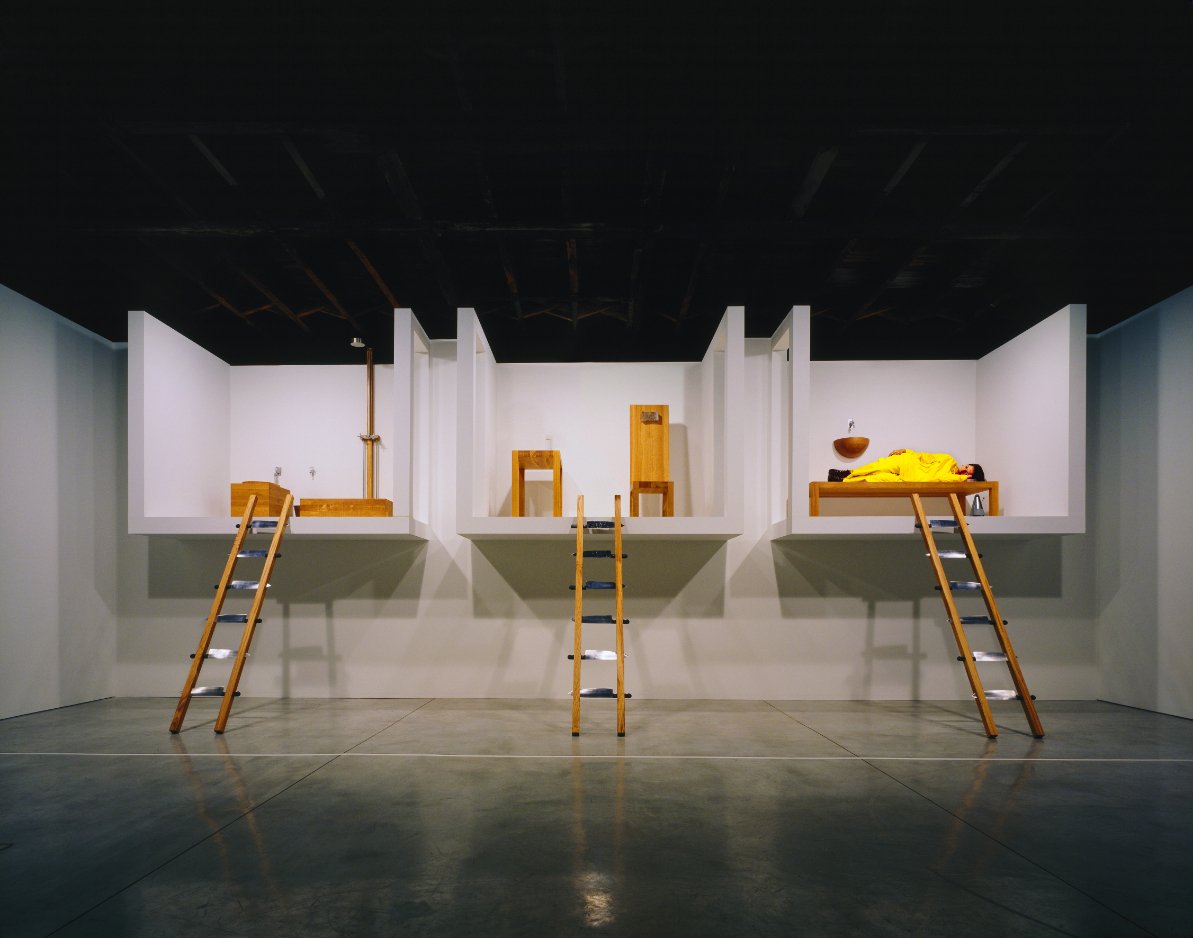
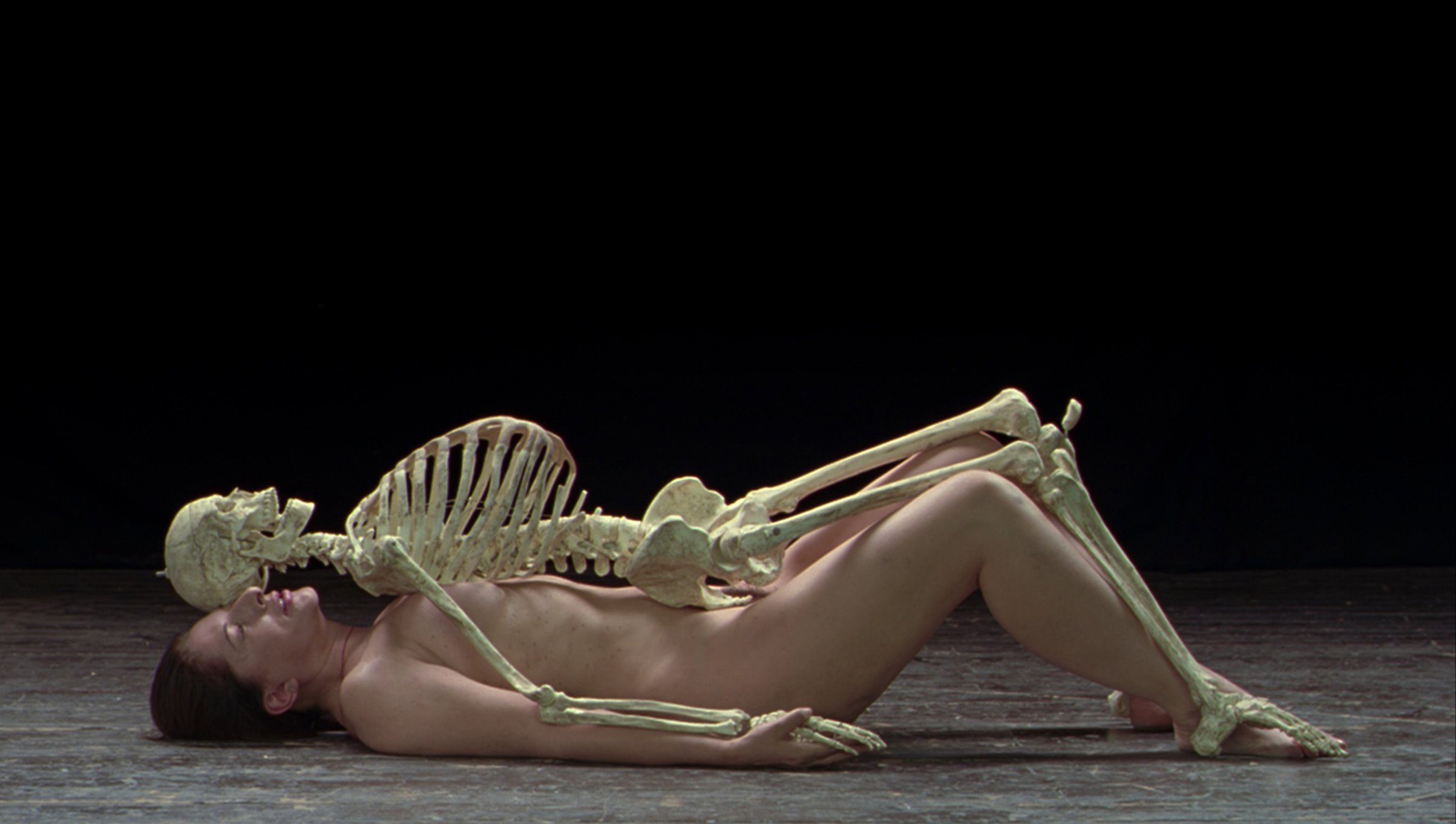
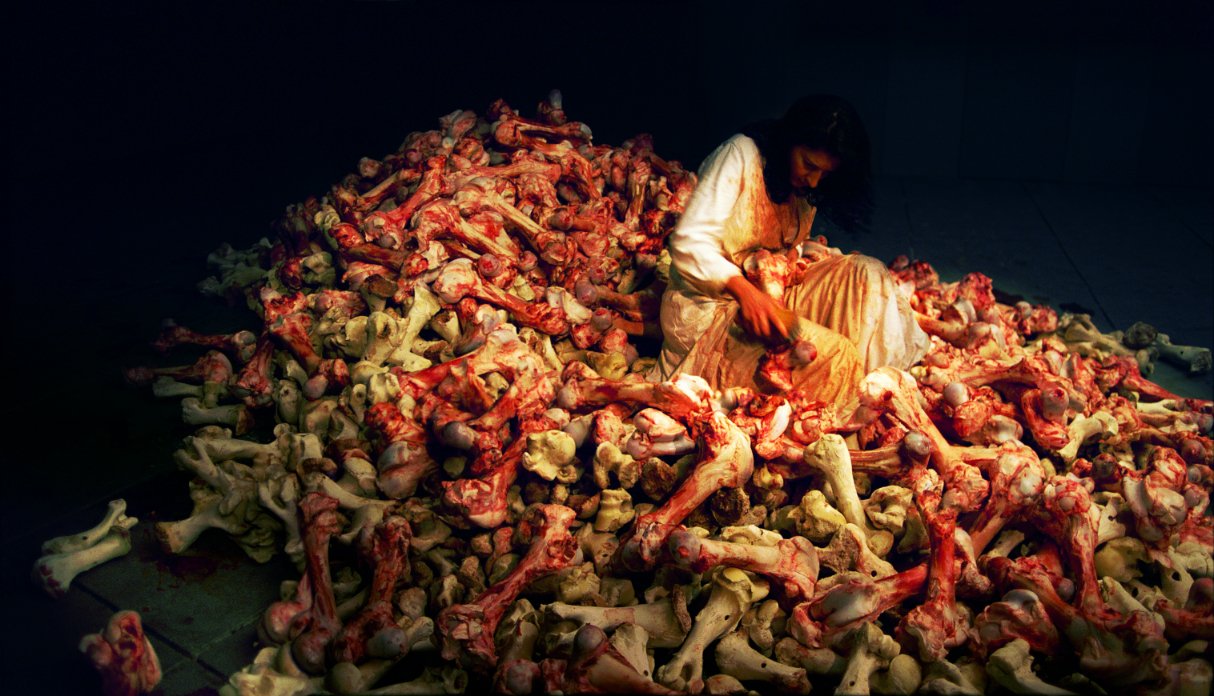
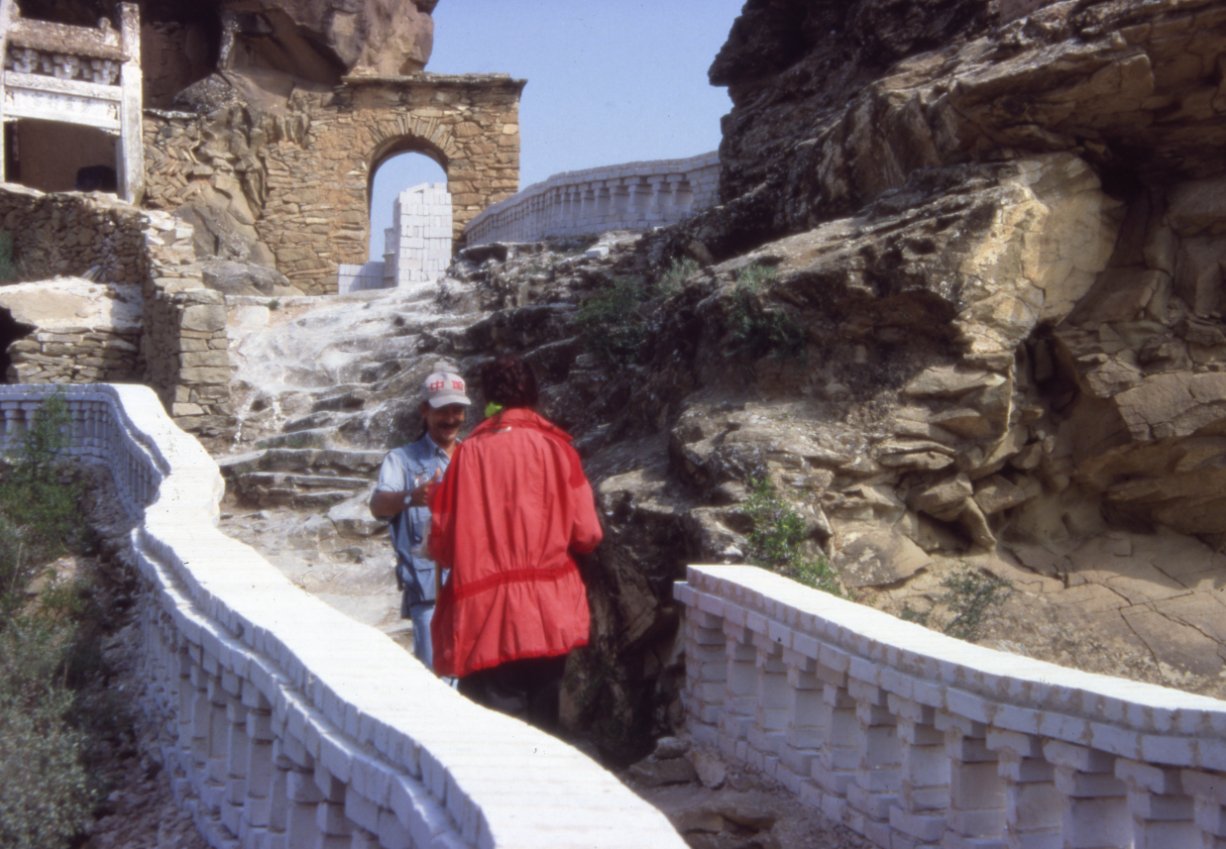

The exhibition opens with Public Participation, featuring two works in which Abramović famously engaged directly with her audience: from the radical physical interaction of Rhythm 0, 1974 to the quiet stillness of The Artist is Present, 2010. Held 36 years apart, the two works encapsulate the development of her practice. Following on, The Communist Body foregrounds Abramović’s origins in the former Yugoslavia and how Communist ideals, experienced socially as well as personally, have informed her practice. Works featured here include Rhythm 5, 1974 (London, Lisson Gallery) and The Hero, 2001. The artist has spoken of the Balkan mind as ‘baroque’, in reference to what she describes as dramatic extremes of expression and emotion. Also included is Balkan Baroque, 1997, a work related to the Balkan wars of the 1990s.
Marina Abramović will be on view until January 1st at Royal Academy Of Arts, Burlington House, London
Read Our Interview of Puppies Puppies on the Occasion of Her Solo Exhibition @ The New Museum →
Jade Guanaro Kuriki-Olivo, known by the pseudonym Puppies Puppies, is revolutionizing trans and Indigenous visibility through her critically-acclaimed conceptual works of sculpture and performance art. Despite a very genuine and personal embodiment within the work, an air of mystery once shrouded her identity as she initially insisted on a level of anonymity rarely exhibited by artists, particularly of her generation. In late 2017, however, this shifted with the very first reference to the artist’s gender transition taking place in her Green (Ghosts) installation at Overduin & Co. in Los Angeles. Kuriki-Olivo and her then-boyfriend lived in the gallery during the hours it was closed, leaving only traces of their existence during the hours it was open. Here, she taped two estrogen pills to the wall, pointing toward her gender-affirming course of hormone therapy—a subtle gesture that gently opened the door of visibility. Employing the mundane, everyday objects that surround her life is a hallmark of Puppies Puppies’ practice and readymades are one of her favorite ways to reference the art historical canon. An initial easter egg of visibility has since swung the door open to a state of consensual voyeurism in Nothing New, her current solo exhibition at the New Museum where the artist is occupying the Lobby Gallery with nearly constant access to her comings and goings via video surveillance, live stream access, and glass walls overlooking a recreation of her bedroom. Puppies Puppies also points to elements of her multi-ethnic indigeneity—Taíno on her father’s side and Japanese on her mother’s—with the inclusion of objects and spiritual practices that connect her disparate lineages in a form of what the exhibition’s curator, Vivian Crockett, refers to as a memoryscape. Crockett got cozy in bed for her interview of Puppies Puppies on the eve of the exhibition’s inauguration to discuss their creative collaboration. Read more.

